It’s common for cycling publications to review the flagship model of whatever bike they’re testing – and in fairness, it’s hardly their fault as that’s typically what companies provide for loaners. However, in this case, I wanted to do things a little differently by comparing the top-end model to the entry-level version. It’s the first time we’re doing this here at Escape Collective, but it likely won’t be the last.
The Ultimate has long been my favorite family of bikes in Canyon’s road lineup, and I still remember being struck by the seductive combination of low weight, high stiffness, good ride quality, and excellent handling when I got my first taste of the brand back in 2010. The current Ultimate may bear little resemblance to what I rode way back when, but it still shoulders the responsibility of being the company’s most versatile go-fast road bike. Low weight and high stiffness are still big priorities, but so are aerodynamic efficiency, rider comfort, handling, and general feel.
The Ultimate is Canyon’s do-everything road bike – not as hardcore as the Aeroad, sportier than the Endurace – and it’s so critical to the company’s identity that folks at Canyon have described it as being akin to what the legendary 911 means to Porsche.
The Ultimate’s most recent update has given it a more aerodynamic carbon fiber shape that Canyon claims is good for a 10-watt savings relative to a comparable previous-generation Ultimate model when traveling at 45 km/h (although the advantage is half that when a rider is on board). Weight savings isn’t a big part of the story with the fifth-generation Ultimate, and in fact, the flagship CFR frame has actually gotten almost 100 g heavier as Canyon engineers wisely prioritized more uniform stiffness characteristics across the range instead of chasing grams.
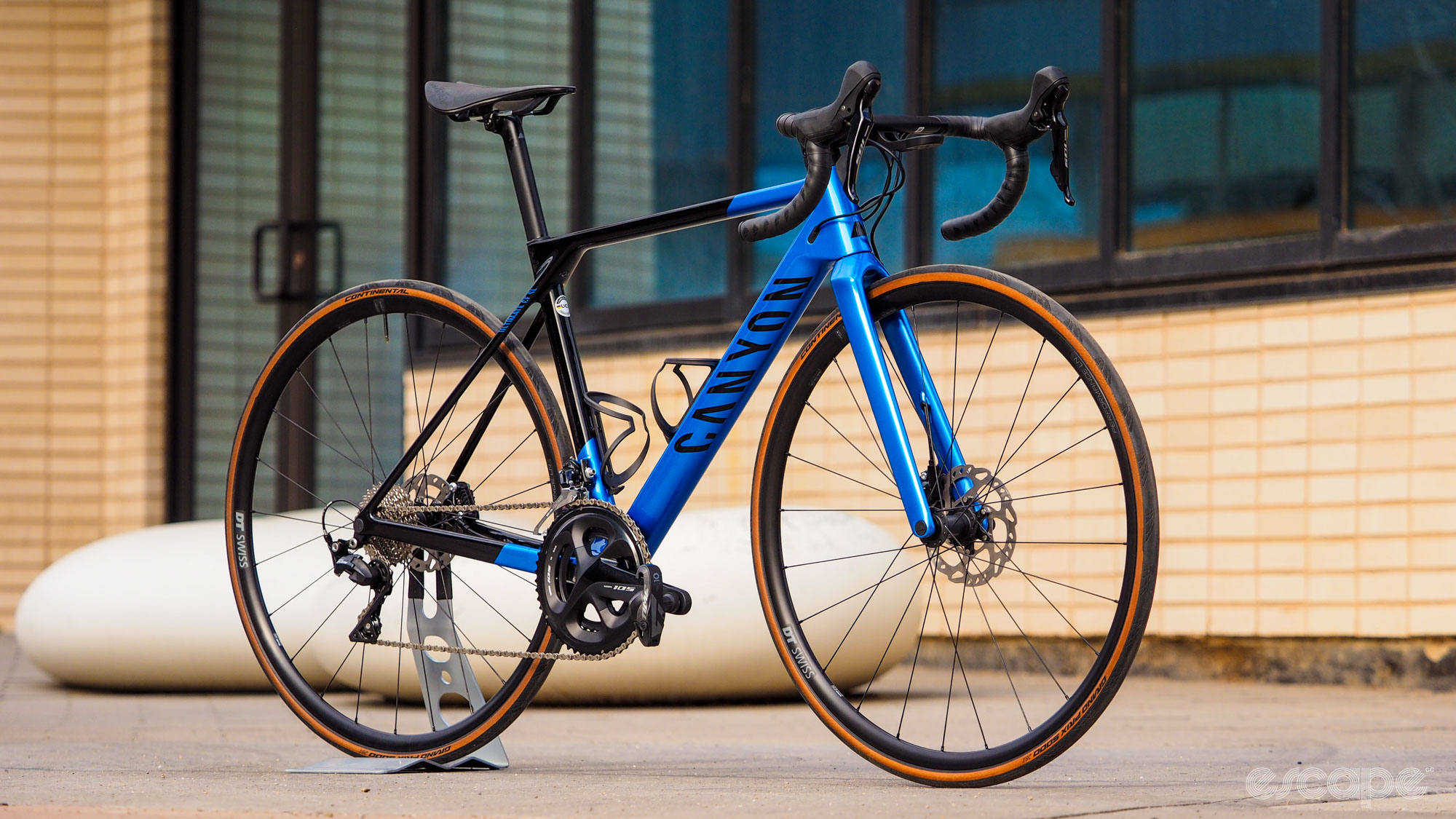
The Ultimate CFR is still wicked light, though, with a claimed weight of just 792 g for a medium frame with paint and hardware, plus 331 g for the matching fork. The middle-child Ultimate CF SLX frame and fork come in at 888 g and 361 g, respectively, while the least-expensive Ultimate CF SL tips the scales at 1,142 g and 361 g (it shares a fork with the SLX).
All three Ultimate frames feature identical geometry, which is now shared with the more racing-inspired Aeroad after that family’s redesign in 2020. The stack figures are relatively low and the reach dimensions relatively long for any given size, although it’s worth noting that neither are as aggressive as what the previous-generation Aeroad used to be. Still, unless you already run a particularly long-and-low setup, you’ll likely be just fine.

There’s nothing laid-back about the bike’s steering characteristics, with low trail dimensions across the board – less than 59 mm for a medium, for example. Chainstay lengths vary with size, but even the 2XL size is still very compact at just 415 mm. Wheelbases are also quite short at 958-1,042 mm, depending on size, all of which combine for quick changes in direction. That all said, bottom bracket drop is a little lower than typical at 73 mm for the 700c-equipped sizes (the 3XS and 2XS sizes use smaller 650b wheels), so it’s not like the Ultimates are meant to be criterium bikes; there’s still a nod toward high-speed stability.
Other shared features include D-shaped aero carbon fiber seatposts, PF86 press-fit bottom bracket shells, 1 1/4”-diameter steerer tubes and integrated one-piece carbon fiber cockpits across the board, and fully internal or partially internal cable routing (depending on model). Maximum tire width is pegged at 32 mm to boost versatility, but there are no built-in fender mounts.
Given the importance of the Ultimate to Canyon – in terms of both the company’s bottom line and its identity in the road category – it’s no surprise that there are a lot of models. There are up to 11 in total, in fact, depending on market, plus a bare frameset option. The price range is also remarkably broad, starting at just €2,700 and going all the way up to €11,000 (exact prices and availability will vary by region).
Flagship models are dressed to the nines with all manner of high-end goodies, like top-shelf electronic groupsets, premium carbon fiber carbon clincher wheels, ultralight carbon fiber saddles, Canyon’s novel CP0018 integrated carbon fiber cockpit, and fully hidden routing. But even lower-end models are still pretty well equipped with stuff like complete Shimano mechanical groupsets, DT Swiss wheels, and carbon fiber finishing kit.

I’ve ridden a flagship Ultimate CFR Di2 model plenty, and can attest that it’s fantastic: wicked light, super snappy and responsive, very good ride quality, and basically no compromises in its quest to go quickly uphill. But then again, most bikes at this price point are awfully good, as they’d damn well better be.
I wondered, though: how much of that goodness would distill down to lower-priced models? Canyon says all three versions of the Ultimate have nearly identical stiffness and ride quality characteristics, differing only in weight (Canyon’s marketing guy says they’re different, but the main engineering person told me they’re the same, and I’m more inclined to believe the latter). But is that true? How much does the build kit affect how the bike performs? And just how severe are those diminishing returns as you reach that price summit?
To help me find out, I requested two Ultimate loaners from Canyon. The Ultimate CFR Di2 is the lightest in the family at just 6.32 kg (13.93 lb) with the highest-end Ultimate CFR carbon fiber frameset, a 2×12-speed Shimano Dura-Ace Di2 wiredless electronic groupset, sub-1,300 g DT Swiss PRC 1100 DiCut Mon Chasseral shallow-section carbon clincher wheels and paper-thin Schwalbe Pro One TT tubeless tires, Canyon’s CP0018 integrated carbon fiber bar-and-stem combo, and a special ultralight version of Canyon’s D-shaped carbon fiber seatpost topped with an unpadded Selle Italia C59 carbon fiber saddle. Retail price is US$11,000/AU$15,350/£10,000/€10,500.
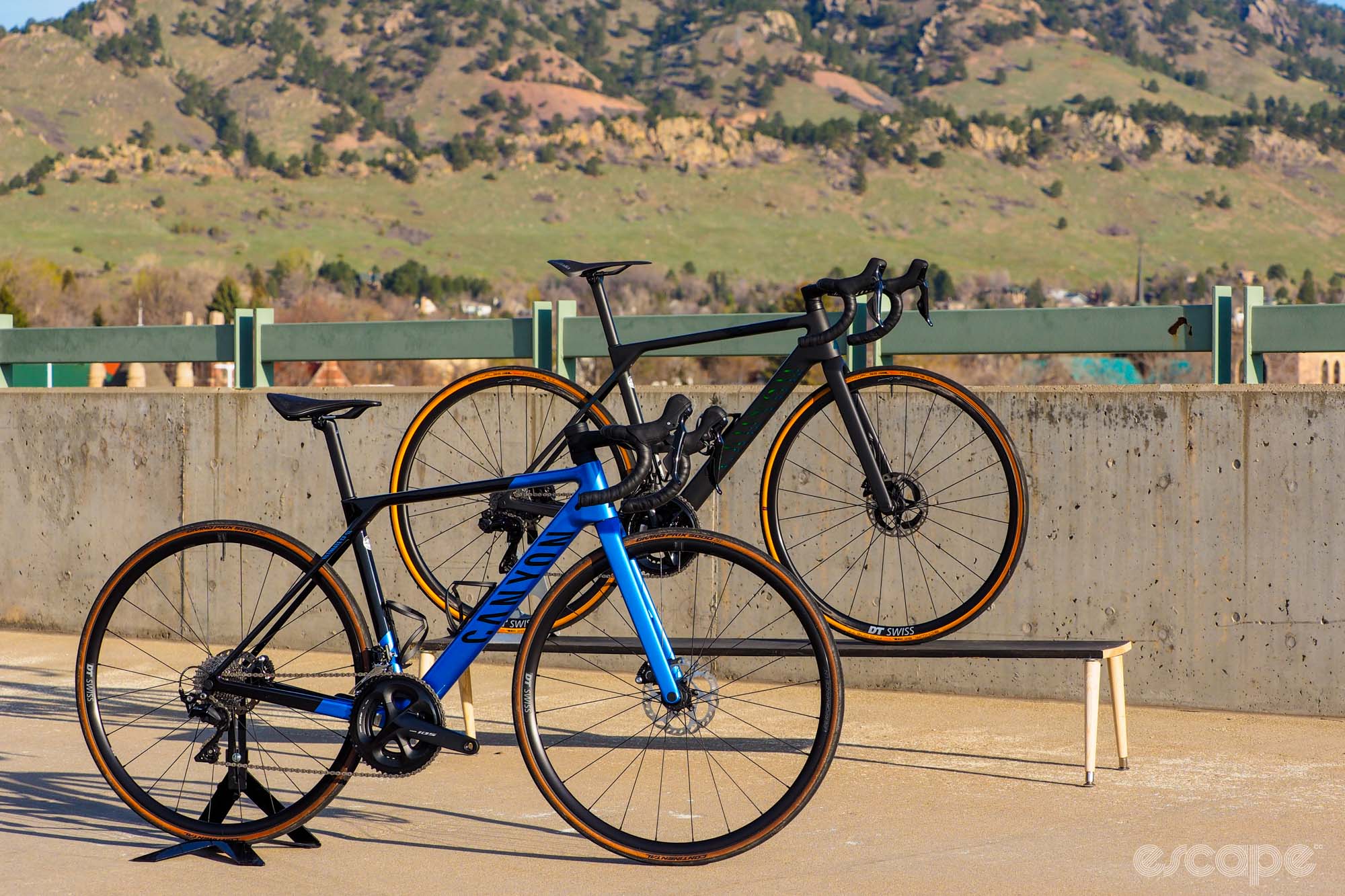
The other bike is the least expensive in the Canyon Ultimate range: the Ultimate CF SL 7, built with the Ultimate CF SL carbon fiber frameset, a 2×11-speed Shimano 105 mechanical groupset, basic DT Swiss Performance LN aluminum clinchers, Canyon’s older H11 Aerocockpit integrated carbon fiber bar-and-stem combo, and a Selle Italia Model X saddle that’s literally five times the weight of the fancy C59 one on the Ultimate CFR. Claimed weight is also 2 kg heavier than the Ultimate CFR Di2 at 8.22 kg (18.12 lb), but at just AU$4,100/£3,600/€2,700, it’s barely a quarter of the price. (Canyon no longer sells the CF SL 7 in the US market; there, the range starts with the Ultegra-equipped CF SL 8 for US$4,000.)
The question of which of these bikes offers more performance is easy. However, the question of which one makes more sense is decidedly murkier.
In this corner: the Canyon Ultimate CFR Di2
The Ultimate CFR Di2’s defining characteristic is its fantastically low weight. Canyon’s claimed figures are seemingly spot-on as my small-sized sample tipped the scales at just 6.24 kg (13.76 lb). That jarringly low mass is just as noticeable as you’d expect when heading uphill, but it’s also apparent nearly everywhere else. It’s unusually eager when getting going from a stoplight. It’s easier to toss around beneath you when flicking through corners and more adept at changing direction. Heck, it’s even simpler to get the thing on and off the wall in the garage.
However, it’s definitely when climbing that the CFR truly shines. I’m not a horrible climber (and yet still not a good sprinter, either) but my regular riding buddies will attest that I don’t exactly love doing it. But boy, does a truly ultralight bike change your perspective on that in a hurry. For sure, most of us could probably stand to lose a kilo or two of body weight, and while that would have a similar effect, the decrease is usually so gradual that it’s not immediately obvious that you’re climbing faster. But when you switch abruptly from a bike that’s 8 or 9 kg to one that’s more like 6.5 kg, it’s a jolt that immediately makes you feel as if you’ve gained a whole season’s worth of fitness.
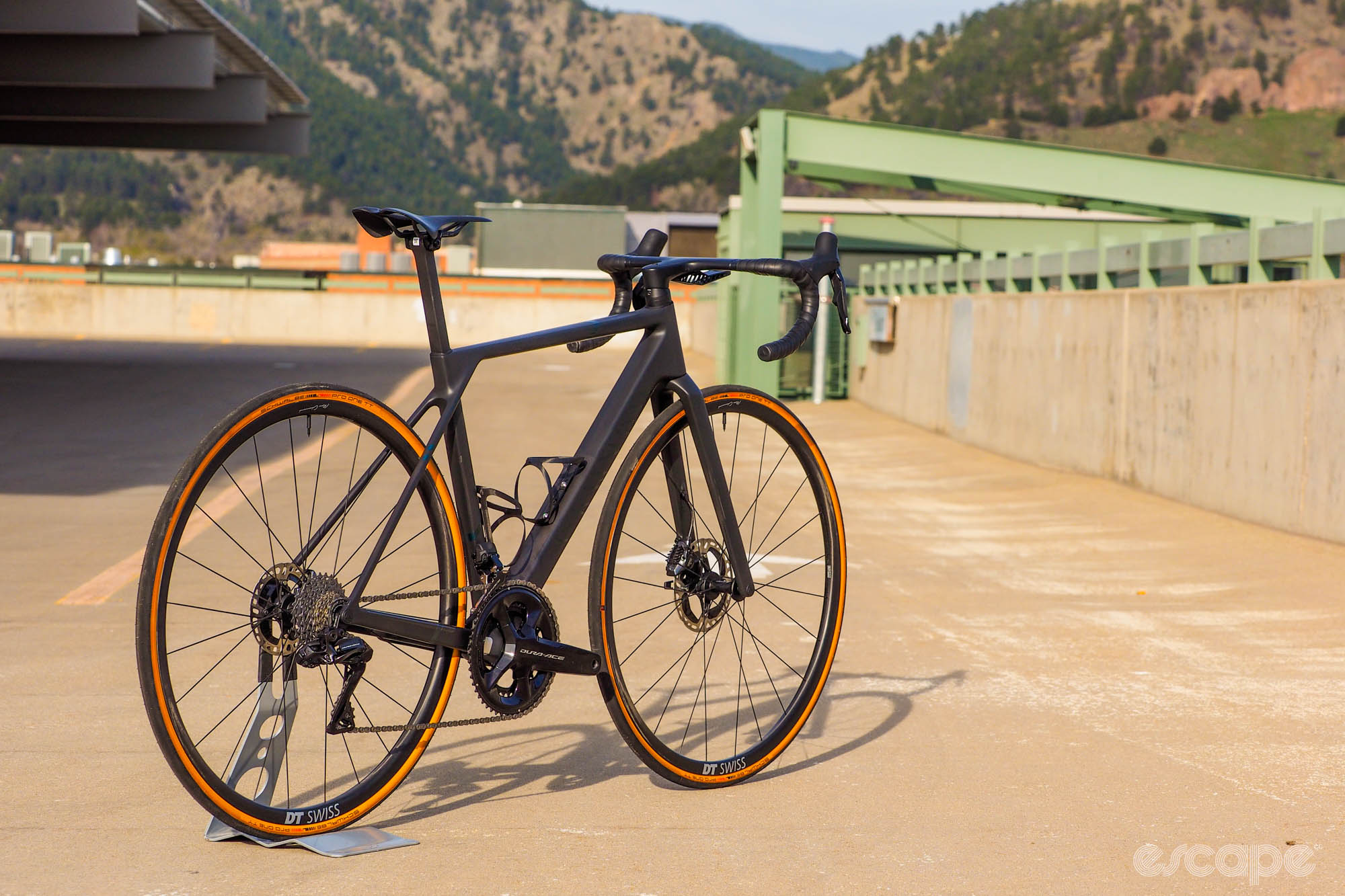
Weight isn’t the only trick up the CFR’s sleeve. As promised, Canyon has bumped up the frame stiffness on this top-end variant so it’s more inline with bikes of more reasonable weight. It’s notably reactive and jumpy under power – like, say, when you’re out of the saddle to surge through a tight uphill switchback – and it’s especially helpful when the going gets particularly steep.
Ride quality is surprisingly good, too, at least at speed. Despite the smaller 25 mm-wide tire Canyon fits to this particular climbing-optimzed model (other Ultimates get 28 mm tires front and rear), the CFR Di2 feels as planted as you can expect a 6.24 kg bike to be. It’s still a bit flinty at times (and can be downright harsh when hitting uglier stuff at slower speeds), but especially when combined with the well-sorted frame geometry, the CFR is plenty happy railing twisty descents when going well in excess of the posted speed limit.
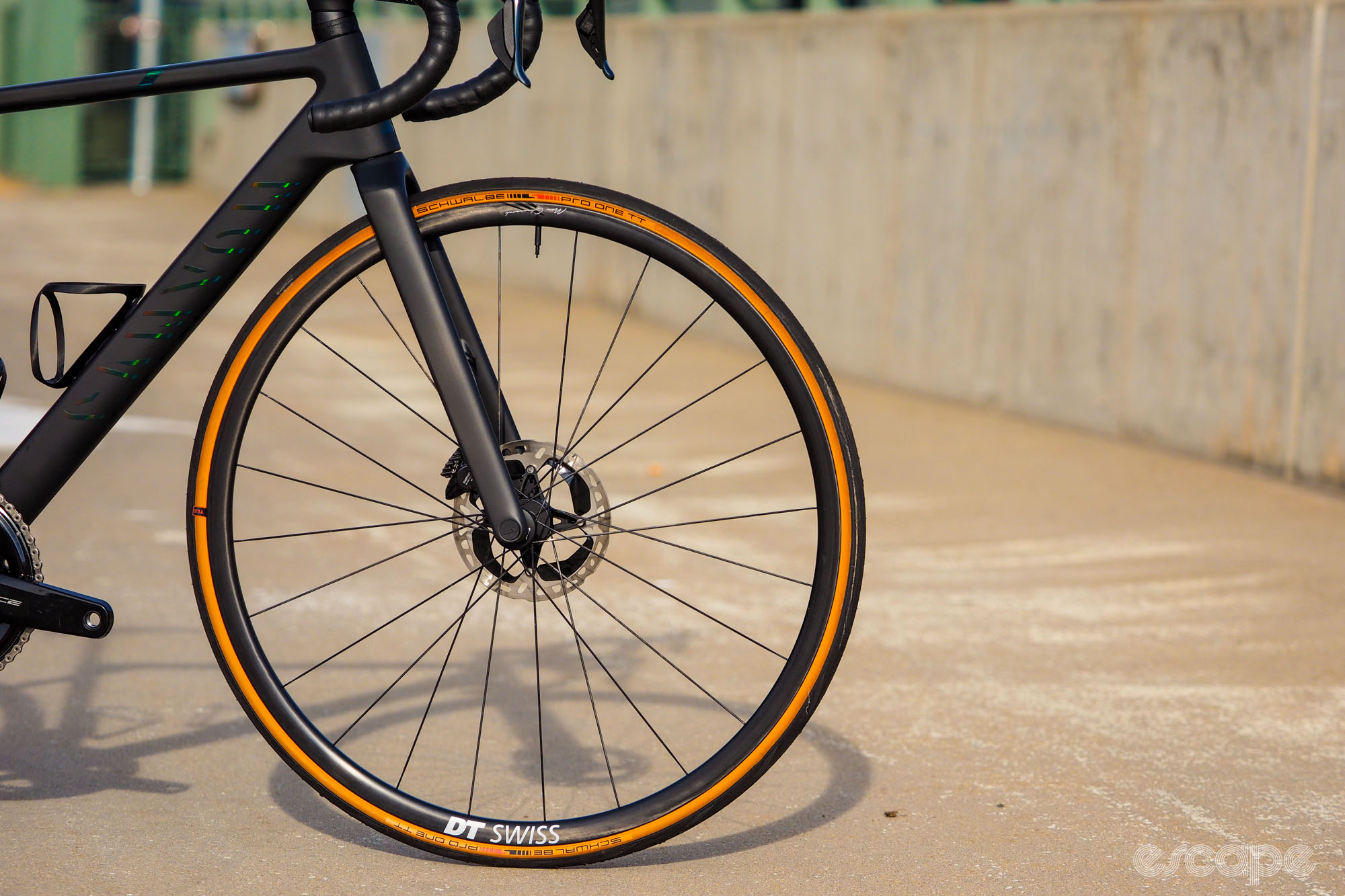
That said, as is often the case with ultralight bikes (and in particular, super light wheels), the Ultimate CFR Di2 doesn’t inspire as much confidence as something heavier when rocketing downhill, with a less planted feel overall and a greater tendency to get blown off-line. And while I don’t personally find any issues with the adjustable width feature of the CFR’s novel three-piece integrated carbon fiber cockpit concept, I do take issue with other aspects.
For one, the way it attaches to the proprietary steerer tube is frustratingly clumsy. It’s not far off from an old quill stem in how the two are connected, and although the union seems impressively secure, the fact it’s not at all serviceable in the field without carrying the proprietary preload tool (even for something as simple as a loose headset) is something the old mechanic in me couldn’t get over. It’s also entirely proprietary so there are no aftermarket options, Canyon doesn’t allow you to select the stem length during the ordering process, and because the lines are fully internal, certain maintenance jobs will potentially be a huge pain.
And in this corner: the Ultimate CF SL 7
OK, so the Ultimate CFR Di2 is amazing. Big surprise, eh? But realistically, few of us are spending this kind of money on a bike. Far more interesting from my perspective was the performance of the bike at the other end of the pricing spectrum: the Ultimate CF SL 7.
There’s an awful lot that this bike does really well.
Just like with the CFR, chassis stiffness on the CF SL 7 is excellent. It’s reassuringly stout underneath you when mashing on the pedals and there’s minimal twist up front when wrestling the bars in a sprint. Handling characteristics are just as nimble and confident given the identical frame geometry, and the fit is also just as reasonably aggressive.
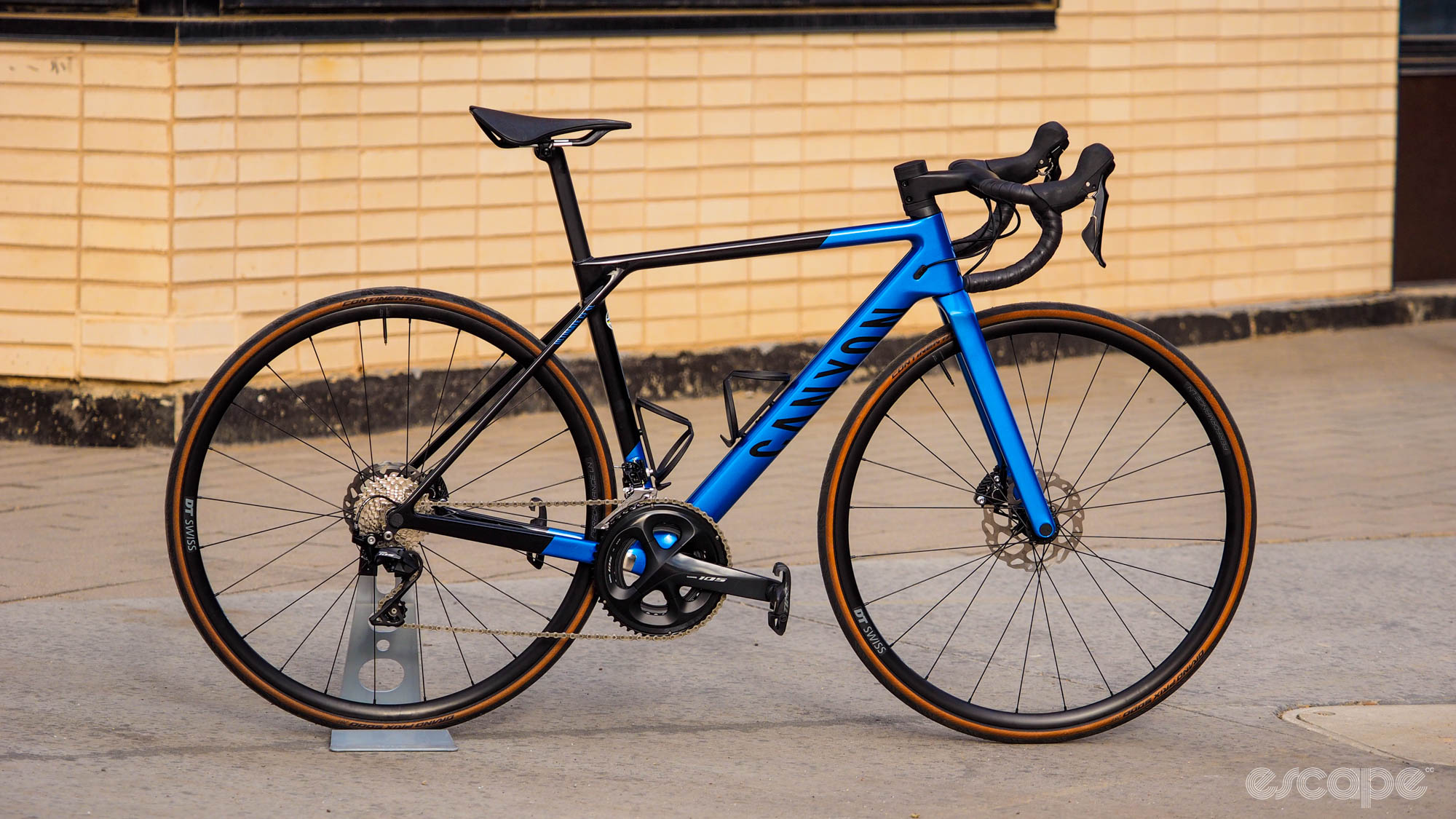
Ride quality is more mixed, which is surprising given the CF SL 7 uses 28 mm-wide tires front and rear. On the one hand, it feels a touch more settled out back. Canyon uses a special ultralight version of the Ultimate’s D-shaped seatpost on CFR-level bikes, made with a fancier (and potentially stiffer) blend of carbon fiber. But the CFR version also features a zero-offset design that even Canyon admits is less apt to flex over bumps, which likely contributes to that bike’s slightly skittery ride.
But despite that higher-volume front tire, the CF SL 7 doesn’t seem any more comfortable up there, which I attribute to the H11 integrated carbon fiber cockpit. This is a carryover unit that was originally used on the previous-generation Aeroad, and while I personally really like the shape (deep drops and long reach FTW!), it doesn’t give at all on bumps. There’s a fair bit of vibration transmitted to your hands, and bigger bumps send jolts through your forearms. My hunch is that a conventional stem (1 1/4”-diameter for Canyon) and 31.8 mm-diameter bar would do wonders for the CF SL7’s ride comfort.
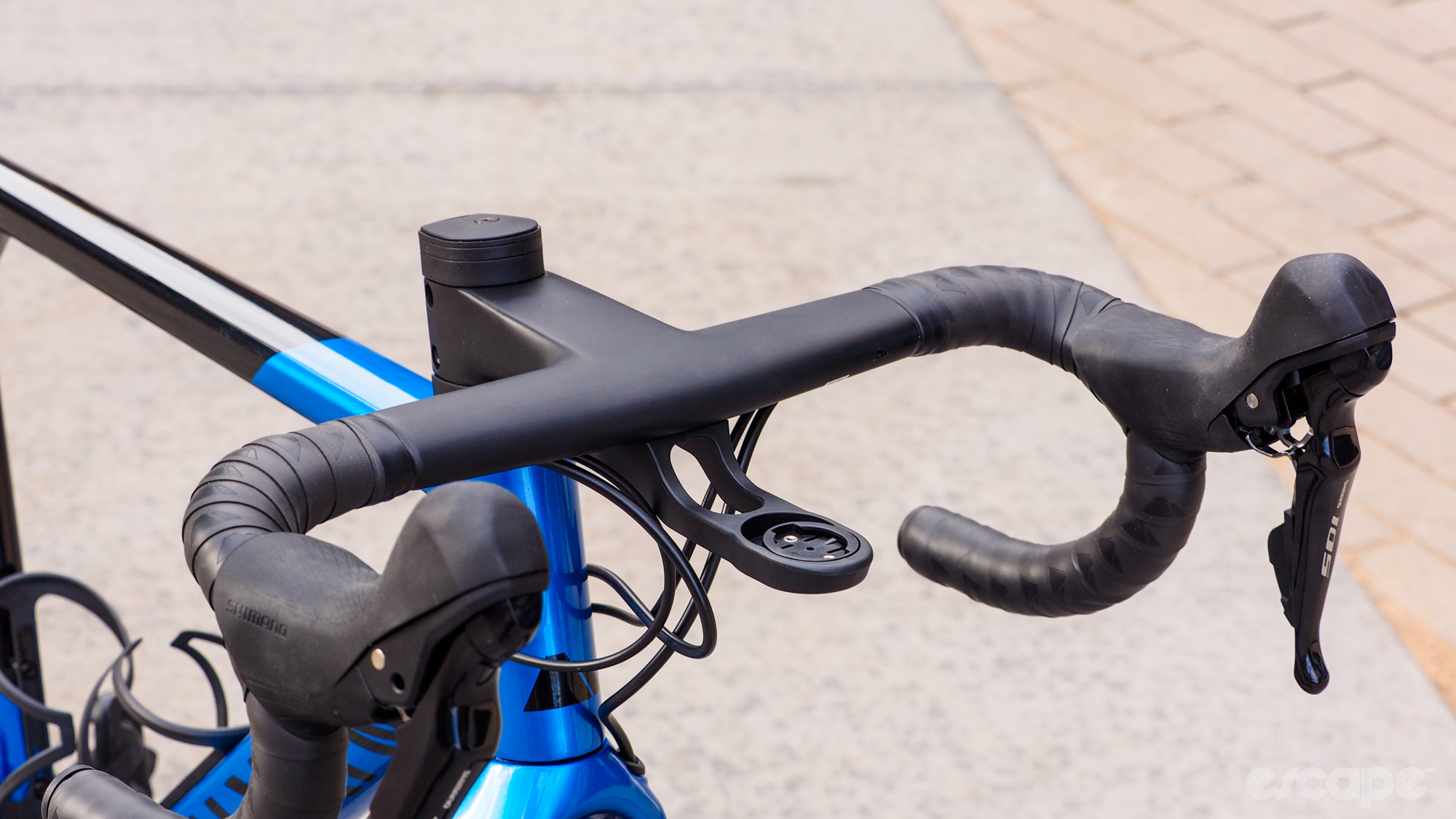
It’s also an odd visual pairing for the Ultimate since its headset clearly wasn’t designed to blend with the H11, and it’s potentially a sizing headache since Canyon still doesn’t allow you to customize the cockpit dimensions during the ordering process – which could be a particularly big issue for newer riders who still haven’t settled on their preferred positions. But whereas the CFR is fully internally routed, the CF SL’s housings and hoses run along the underside of the H11 and outside of the head tube so it’s at least comparatively easy to swap.
I’ve no complaints at all with the Shimano 105 mechanical drivetrain, however, as it’s absolutely brilliant. Shifts front and rear are rattled off with surgical precision, the lever action is impressively light with excellent ergonomics and welcome tactile feedback, and the hydraulic disc brakes offer comparable performance to Ultegra and Dura-Ace (and should you feel the need for more bite, the stock Shimano RT70 rotors are compatible with semi-metallic pads, too).
Granted, I won’t pretend that the shift performance is on-par with Di2 – it’s truly phenomenal stuff – and the mechanical drivetrain will also require more attention to keep it in tip-top shape. But that all said, none of us should be too quick to write off cables just yet.
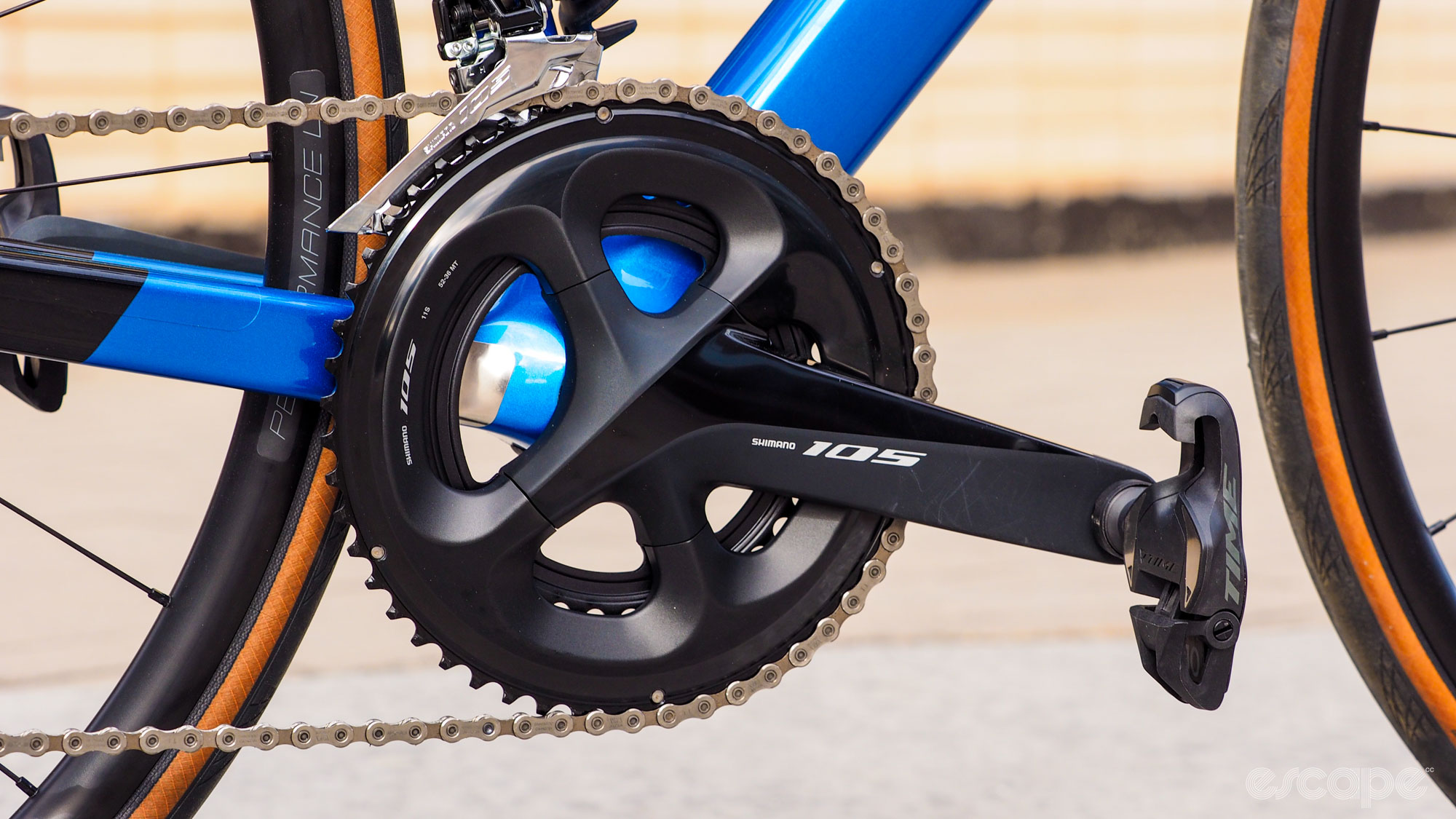
More kudos go to the Selle Italia Model X saddle, which may be heavy at over 300 g, but it’s comfy and well-shaped. As already mentioned, Canyon doesn’t skimp on tires even for this base-level Ultimate, but the stock DT Swiss Performance LN wheels are a bit ho-hum. Two thumbs up for the proper Star Ratchet driver design (instead of a cheaper conventional pawl system), but the wheelset is heavy at nearly 1,900 g for the set with pinned – instead of welded – rim seams and straight–gauge round stainless steel spokes that behave like 28 little air brakes per wheel.
It’s the added weight overall that’s really the only major downside to the CF SL 7 relative to the CFR Di2. It’s not an issue in steady-state cruising on fairly level ground where Newton’s laws still apply. Although there’s obviously a bit more oomph required to get the thing up to speed, once you’re there, the difference in effort required to maintain that speed in the real world is pretty miniscule.
Climbing is a different story as that extra 2 kg is more noticeable, particularly on steeper stuff and when switching between the bikes back-to-back. But is that difference worth an extra €8k?
The curveball
Even with an unlimited budget, closing the 2 kg weight gap to the CFR Di2 just isn’t a realistic option if only given the CF SL’s heavier frame. But while shaving weight off of your gear may be a game of diminishing returns, that’s also something savvier buyers can exploit to their advantage. And in the case of the Ultimate CF SL 7, there are some big gains to be made with minimal investment – particularly in wheels.
I was curious how my CF SL 7 tester might feel with a more performance-oriented (but still budget-friendly) wheel upgrade, and our friends at Hunt graciously provided a set of their Alloy SL Disc wheels to help answer the question. They’re Hunt’s lowest-priced aluminum wheels with a retail price of just US$549/AU$881/£429/€559, but with an actual weight of 1,458 g (655 g front, 803 g rear), they lop nearly half a kilo (almost a full pound) of rotating weight off of the stock Performance LN wheels while seemingly giving up nothing in return.
And yep, it sure is noticeable.
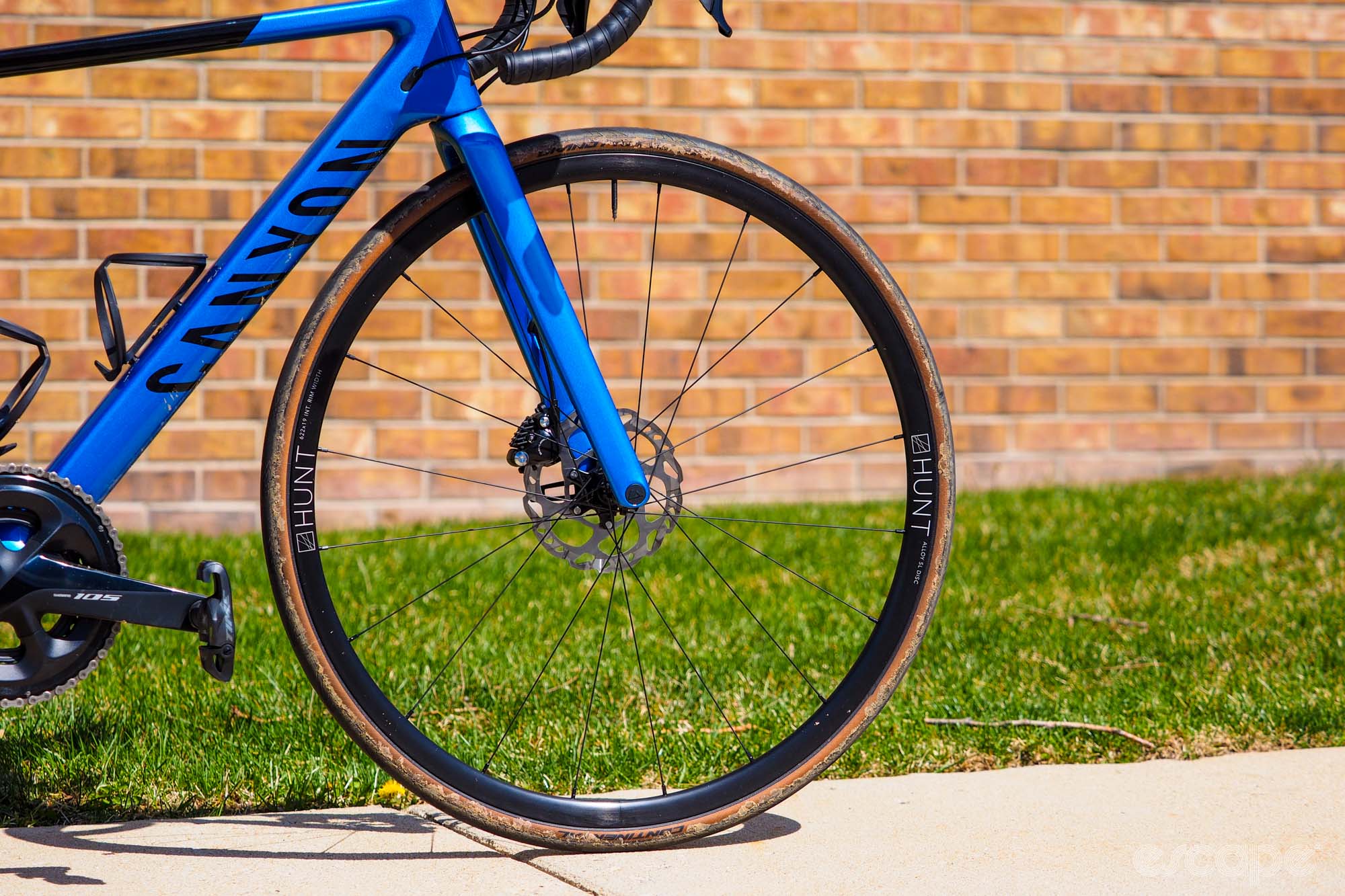
Instantly, the CF SL 7 became more eager on steep climbs, more responsive when accelerating, more nimble in corners. It was a dramatic improvement, and one that truly changed the character of the bike. The static weight was still nowhere near the CFR Di2 at 7.73 kg (17.04 lb), but considering the total cash outlay was still less than €3,300, I’d say that’s pretty good. Notably, that’s a bit more expensive than the Ultegra-equipped Ultimate CF SL 8, but this upgraded CF SL 7 still ends up being lighter than that bike, as well as less expensive assuming you’re able to recoup a couple hundred bucks for the stock DT Swiss wheelset.
Sounds like a win, no?
Game the system
So what’s my point with all of this? Don’t feel constrained by the pre-determined options set before you.
One of my favorite lunchtime rides is barely 27 km (17 mi) in length, but includes 730 m (2,400 ft) of climbing. Much of it’s quite steep, where low weight is key, but the descent is also fun and fast with lots of corners and often swirling winds.
That ride is glorious on the CFR, but the upgraded CF SL 7 honestly isn’t all that far behind.
As much as I’d love to have the Ultimate CFR Di2 in my garage permanently, my finances dictate that something like a modestly upgraded CF SL 7 is far more realistic. And that brings me to my final point: it’s important to look at options in a more holistic fashion when figuring out your next bike. A brand’s standard selection might be just fine, but with a bit of creativity, chances are good that you can effectively game the system to build a bike that’s reasonably close to what you lust after – but can’t afford – while saving a boatload of cash.
More information on the Ultimate can be found at www.canyon.com.
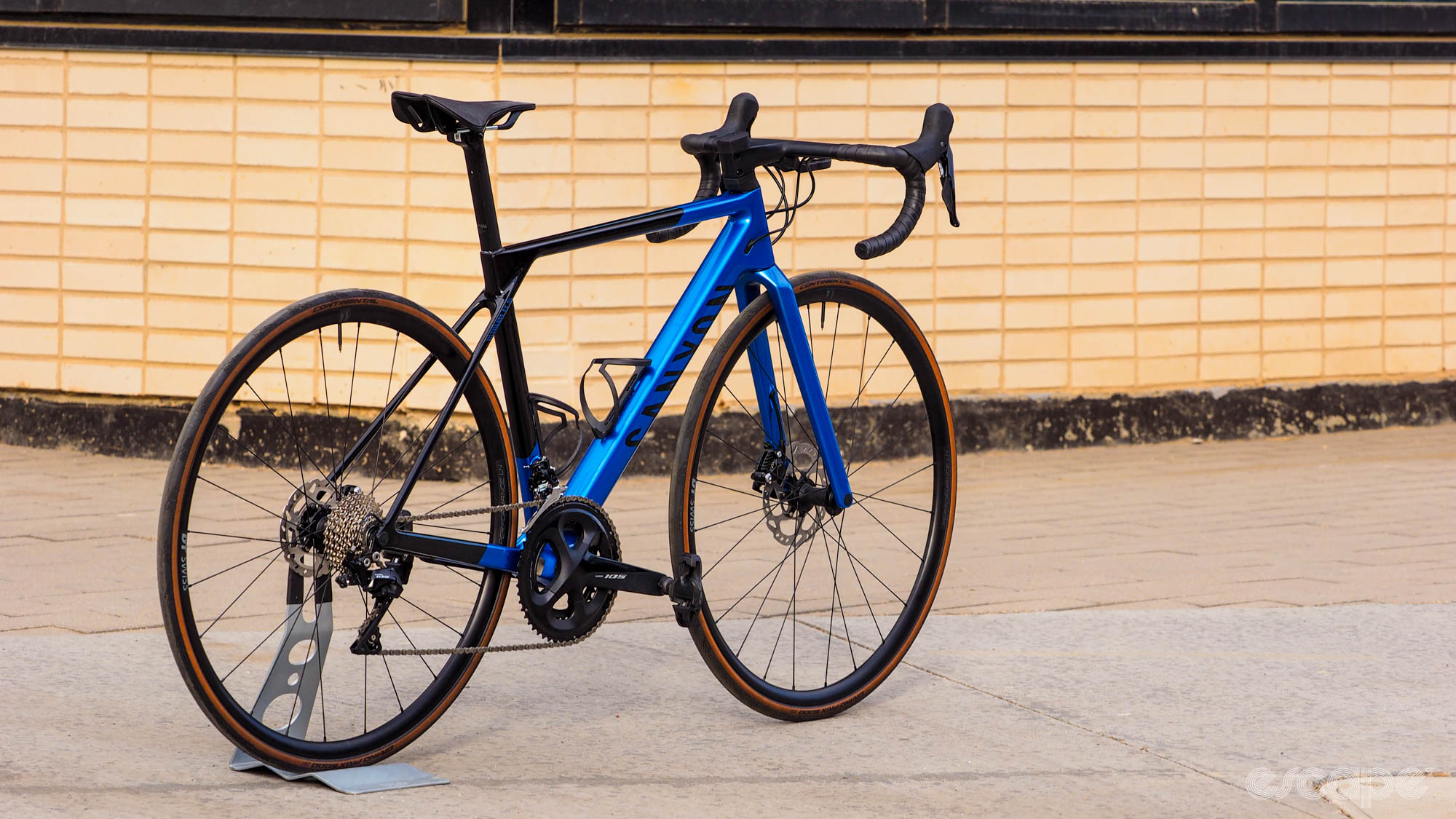

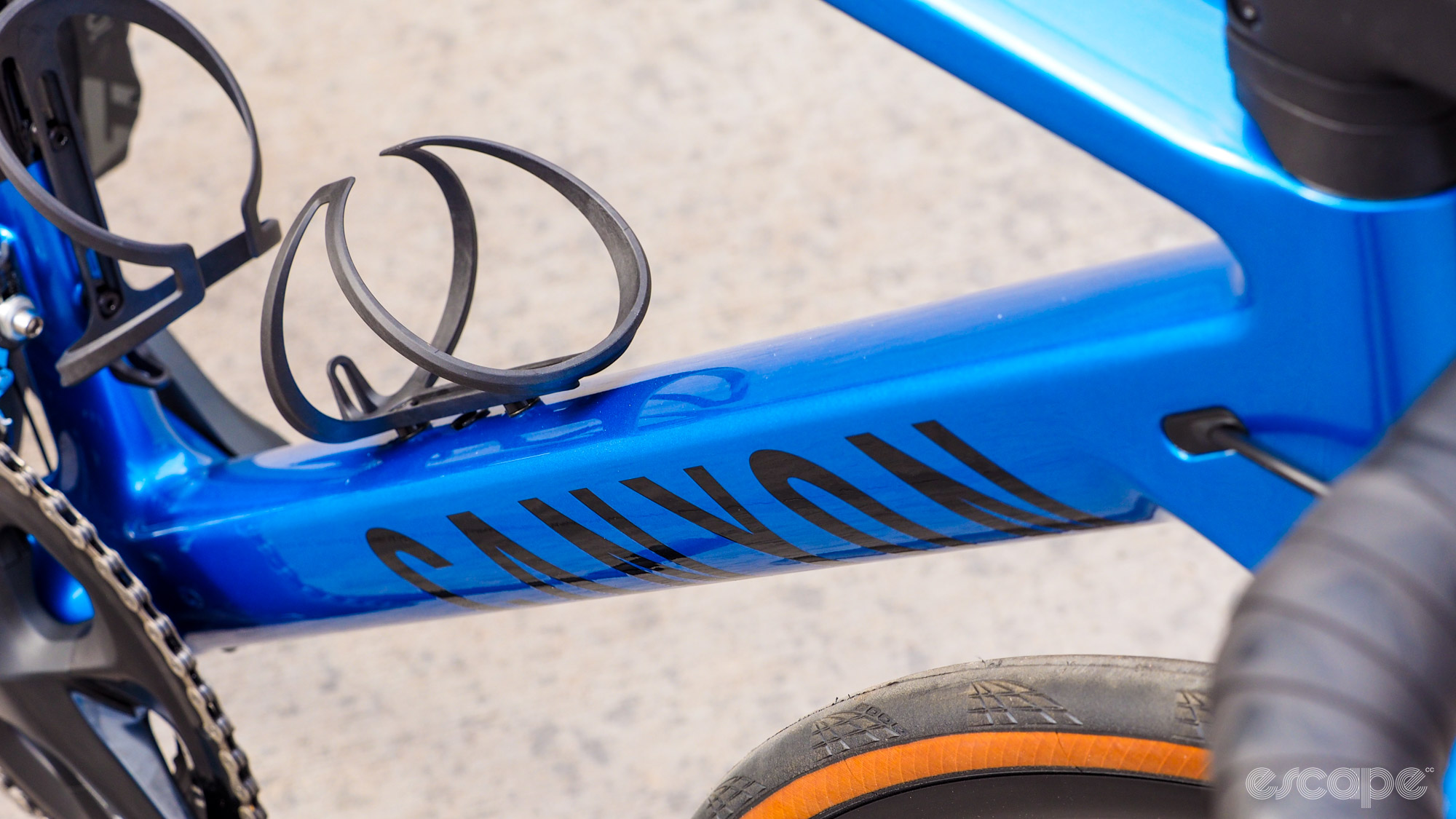
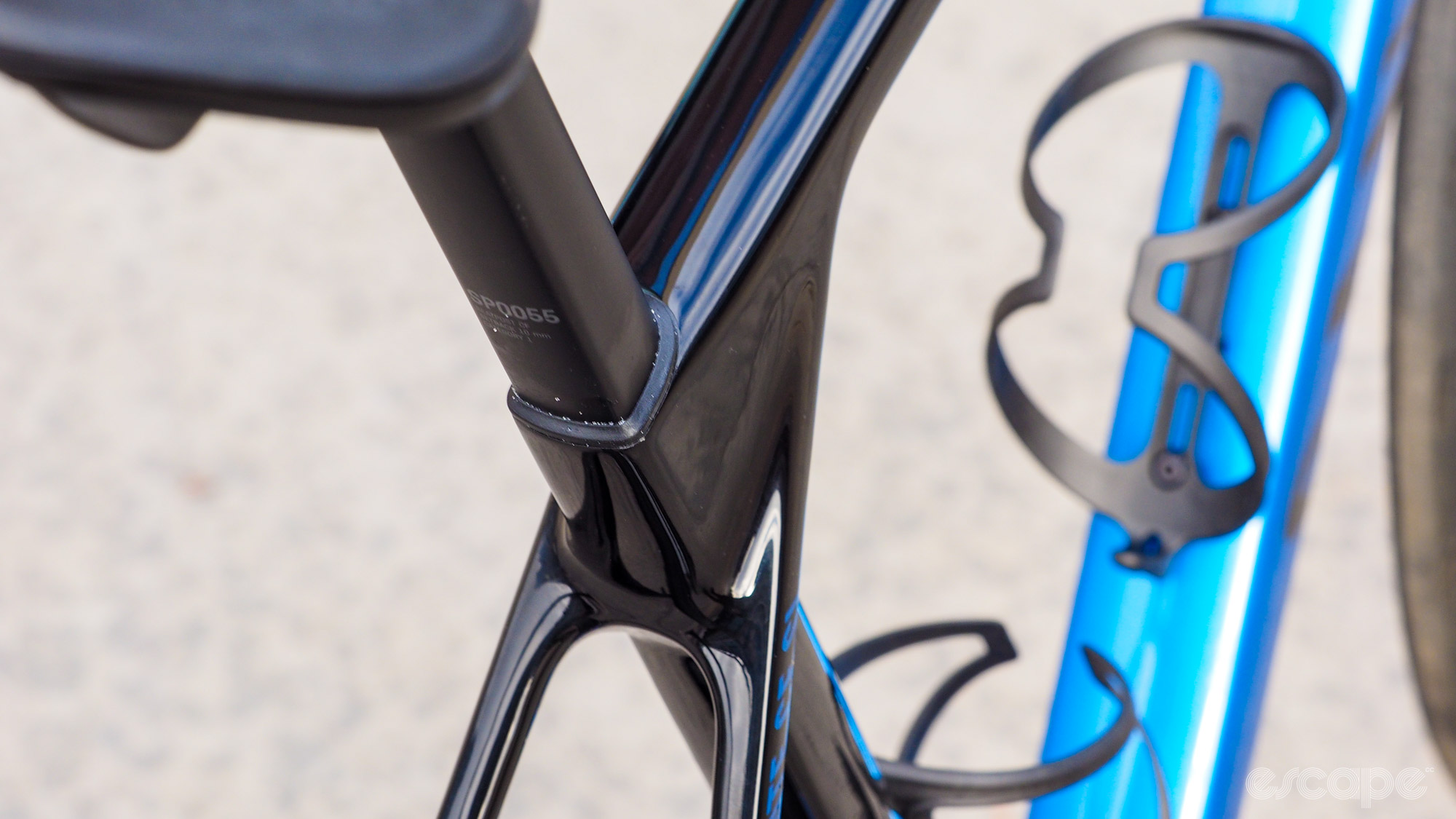

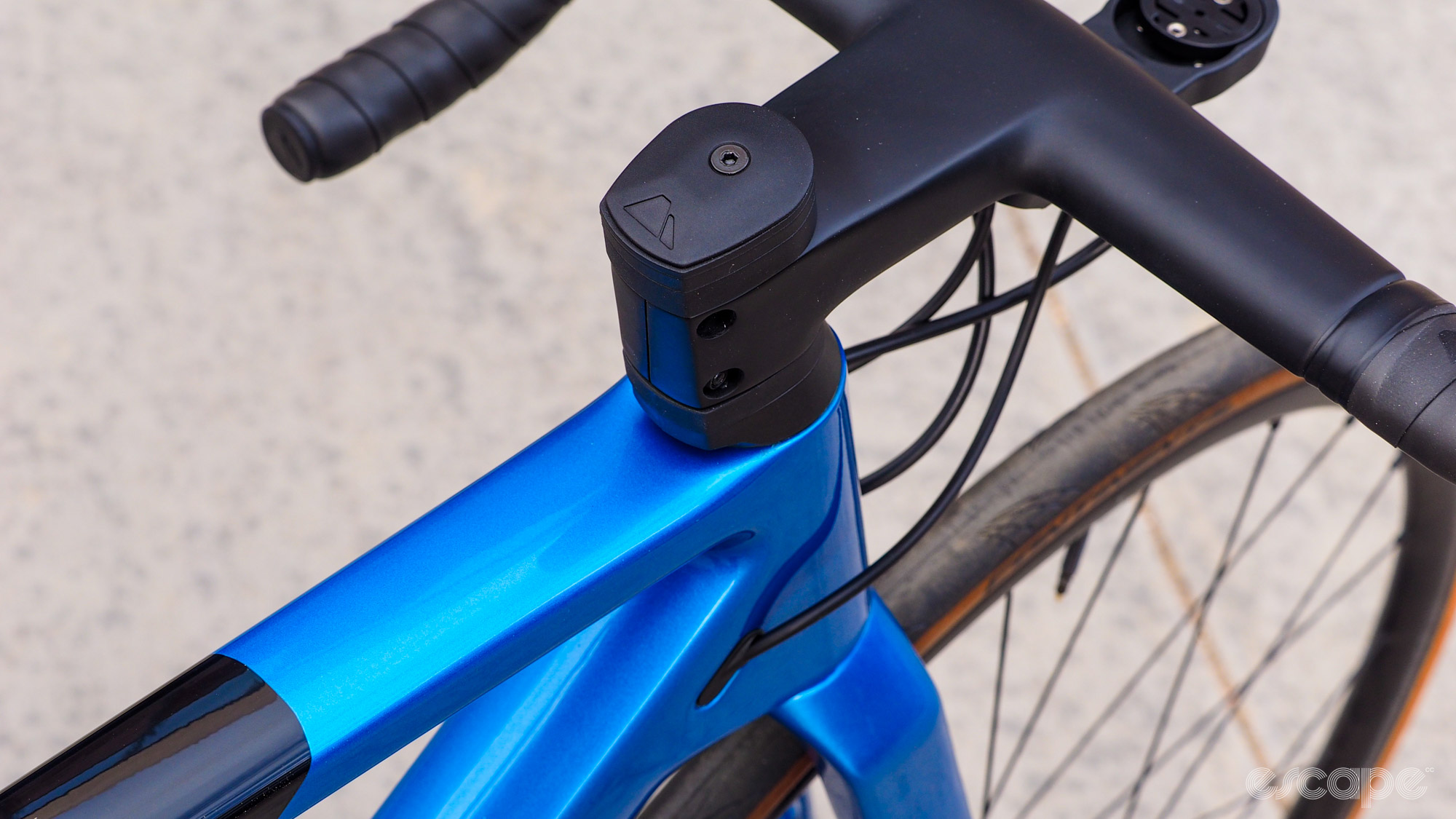

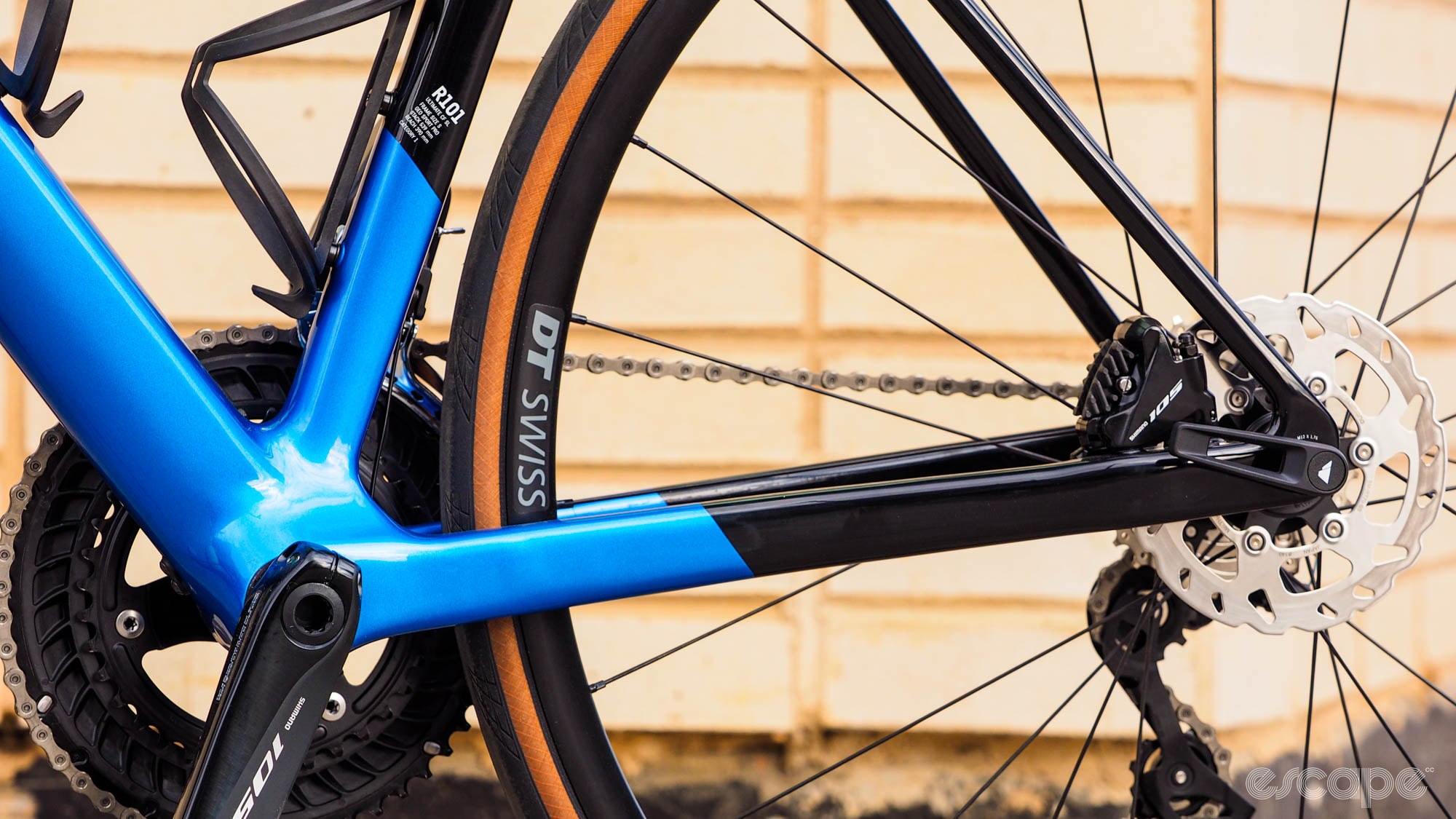
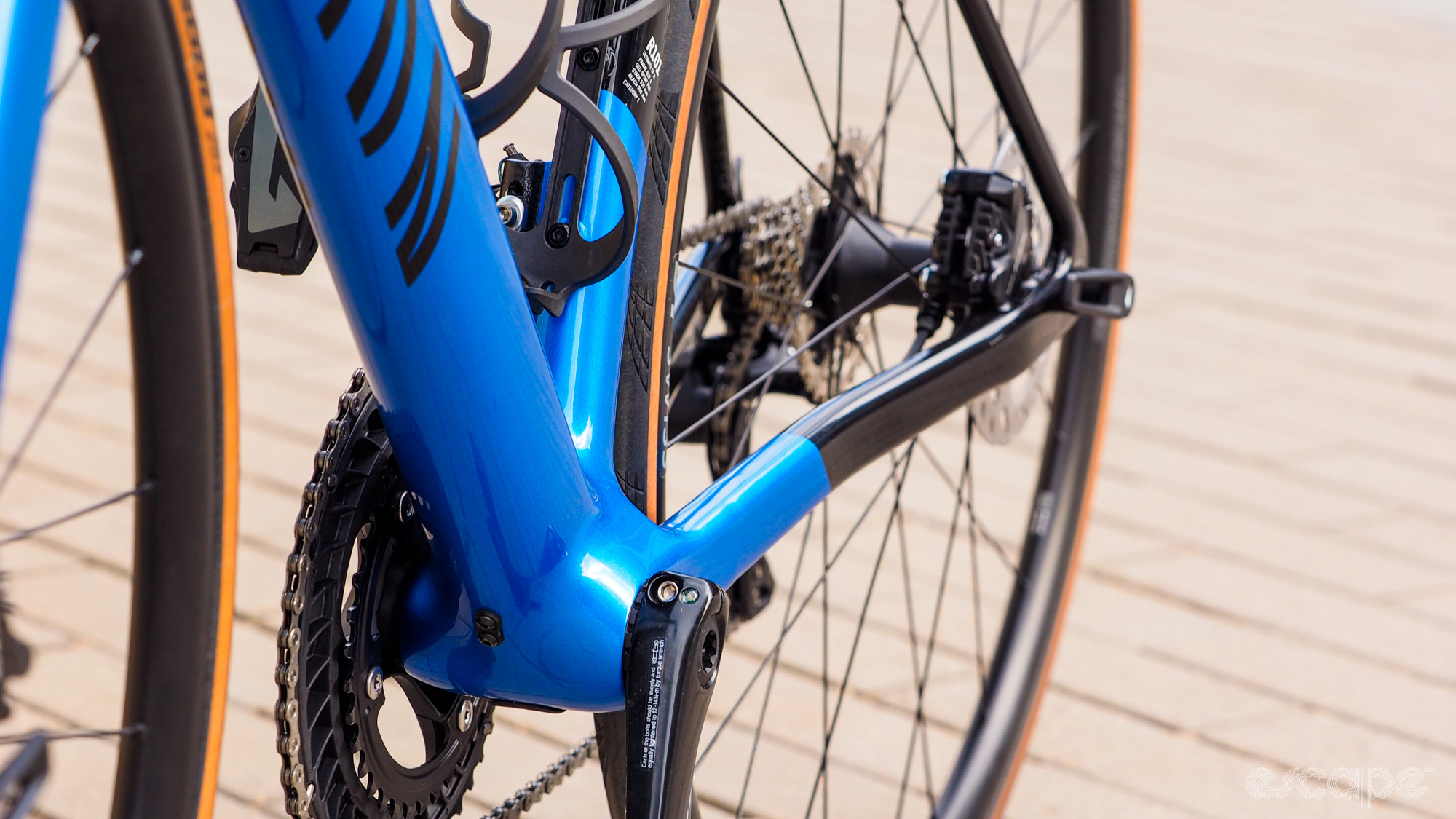
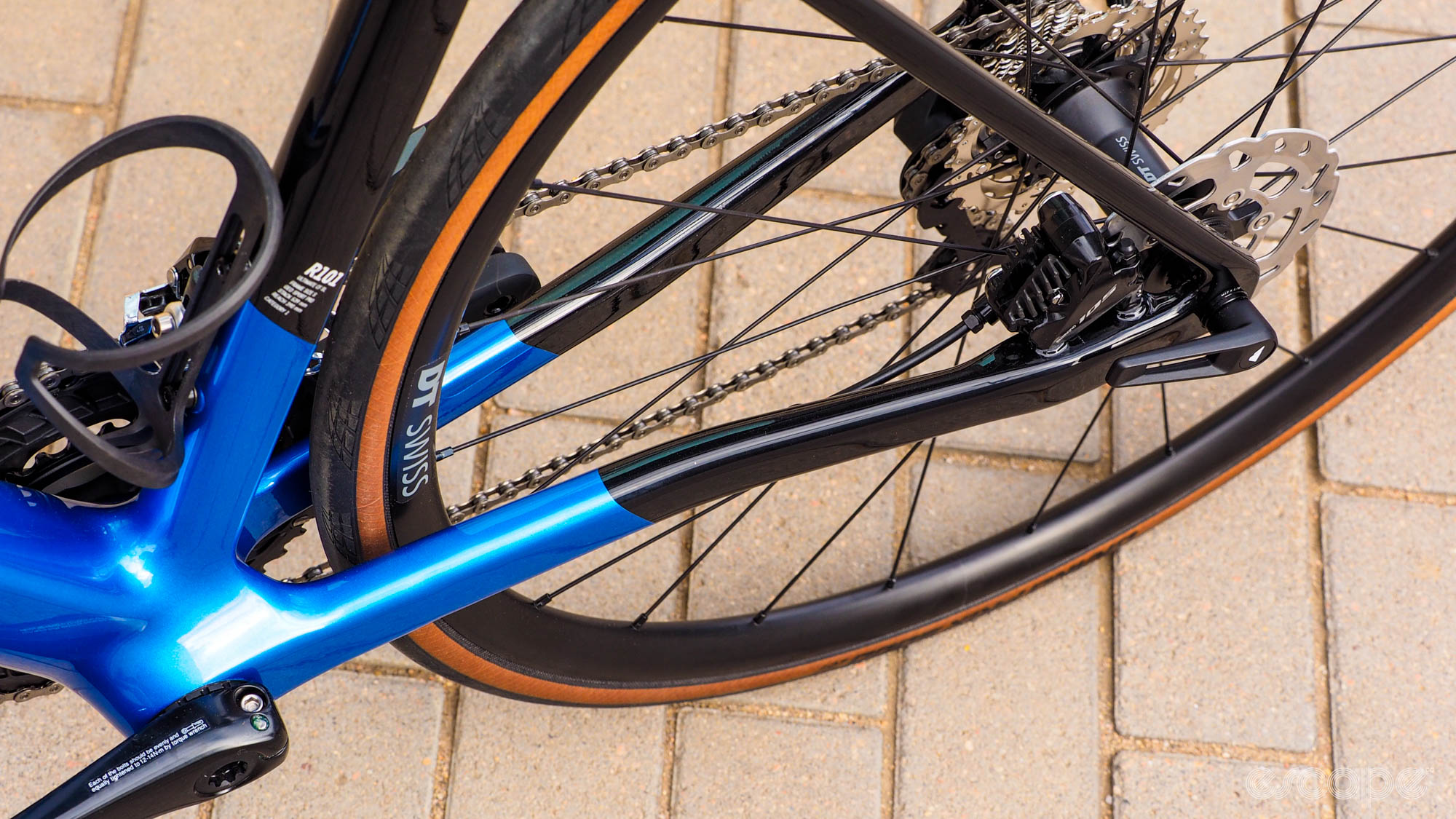

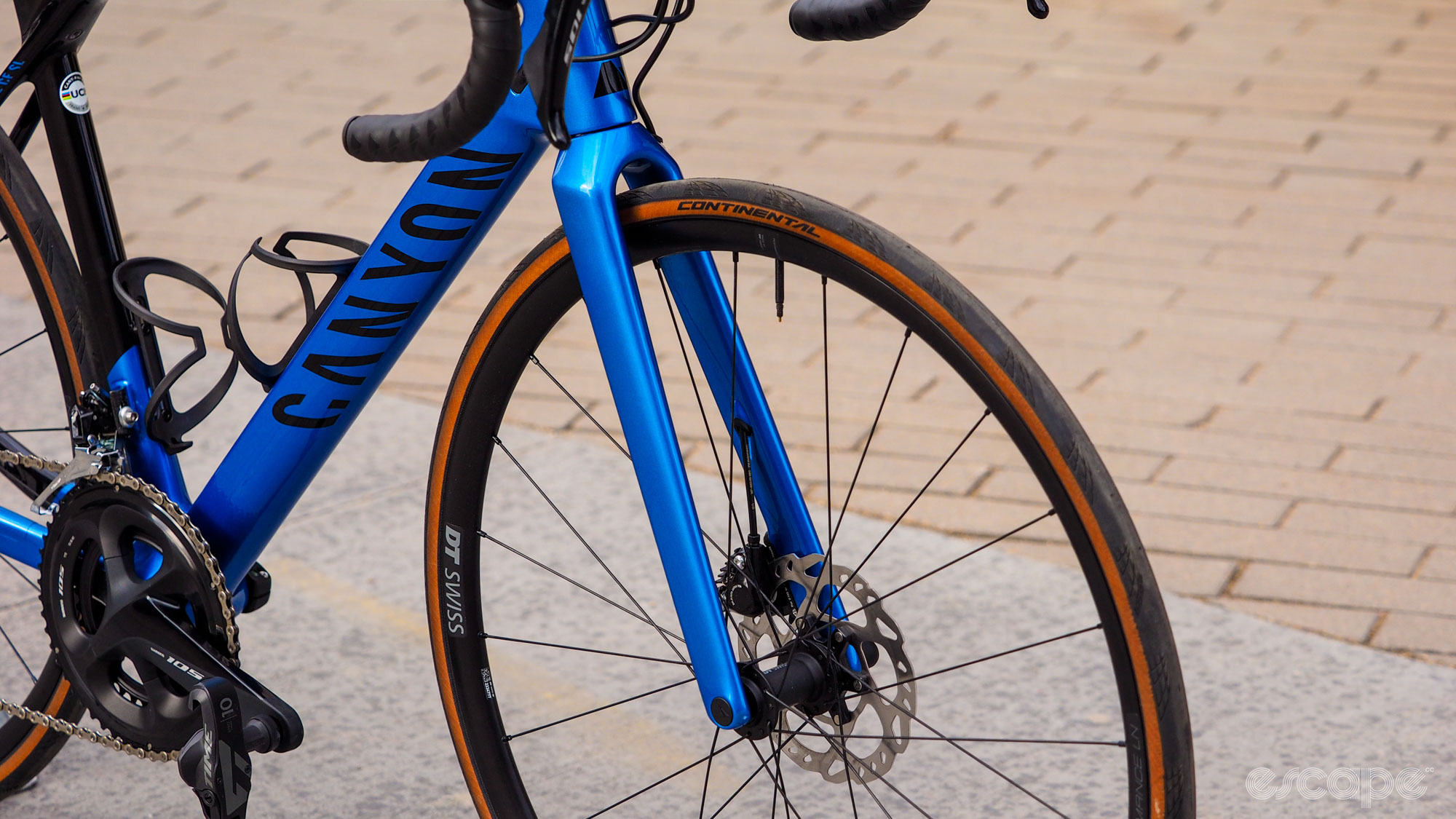
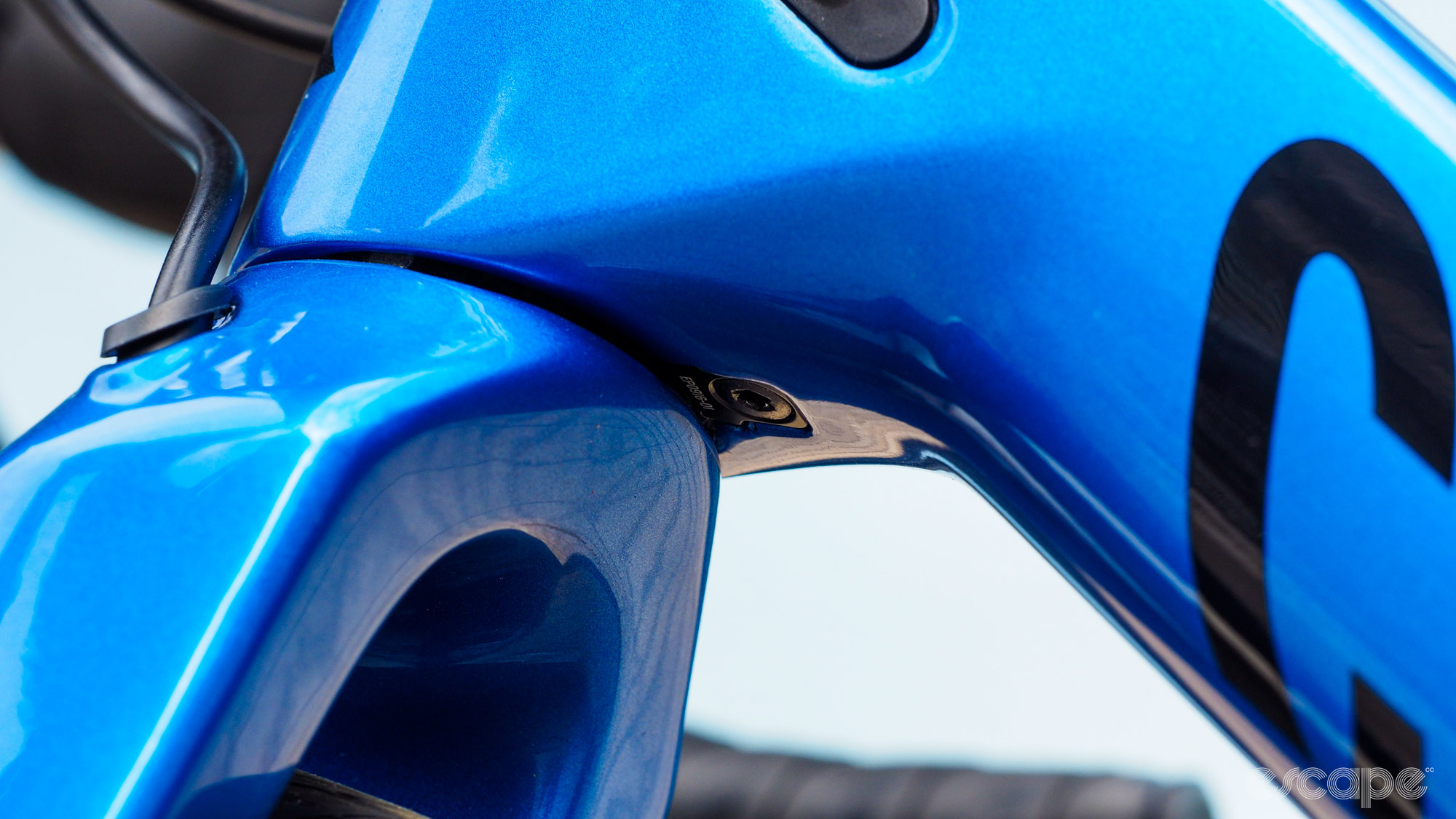

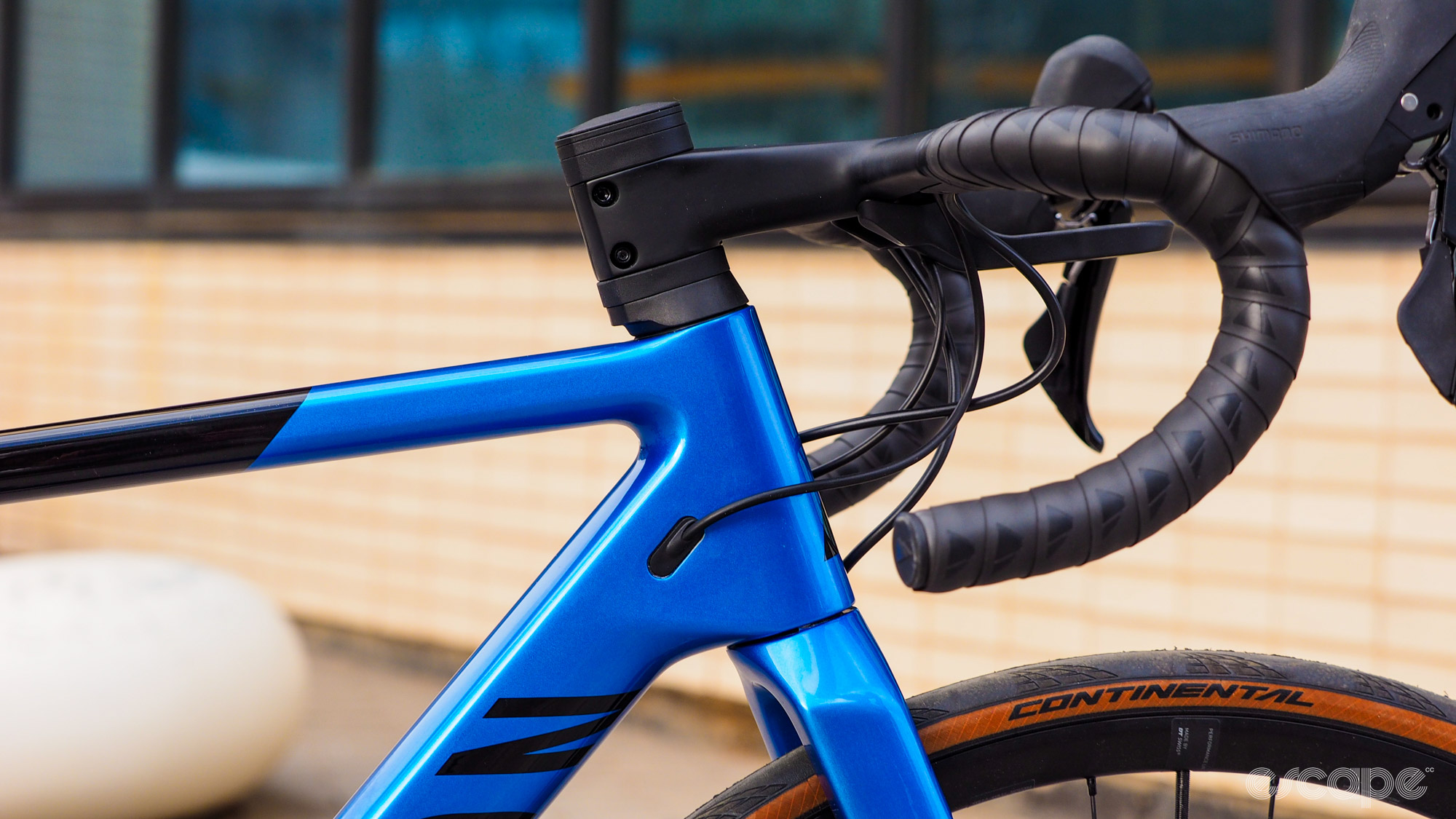
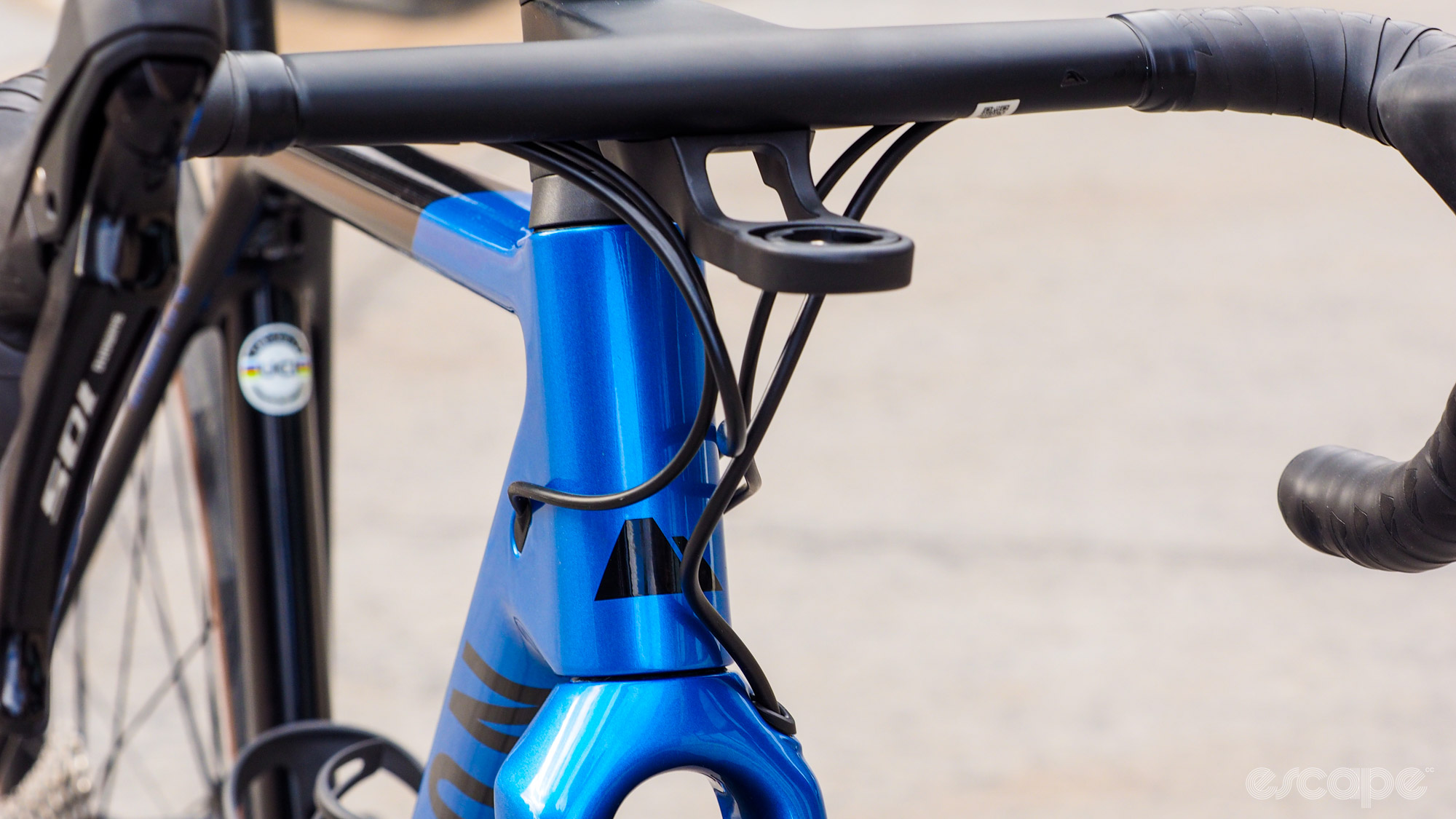
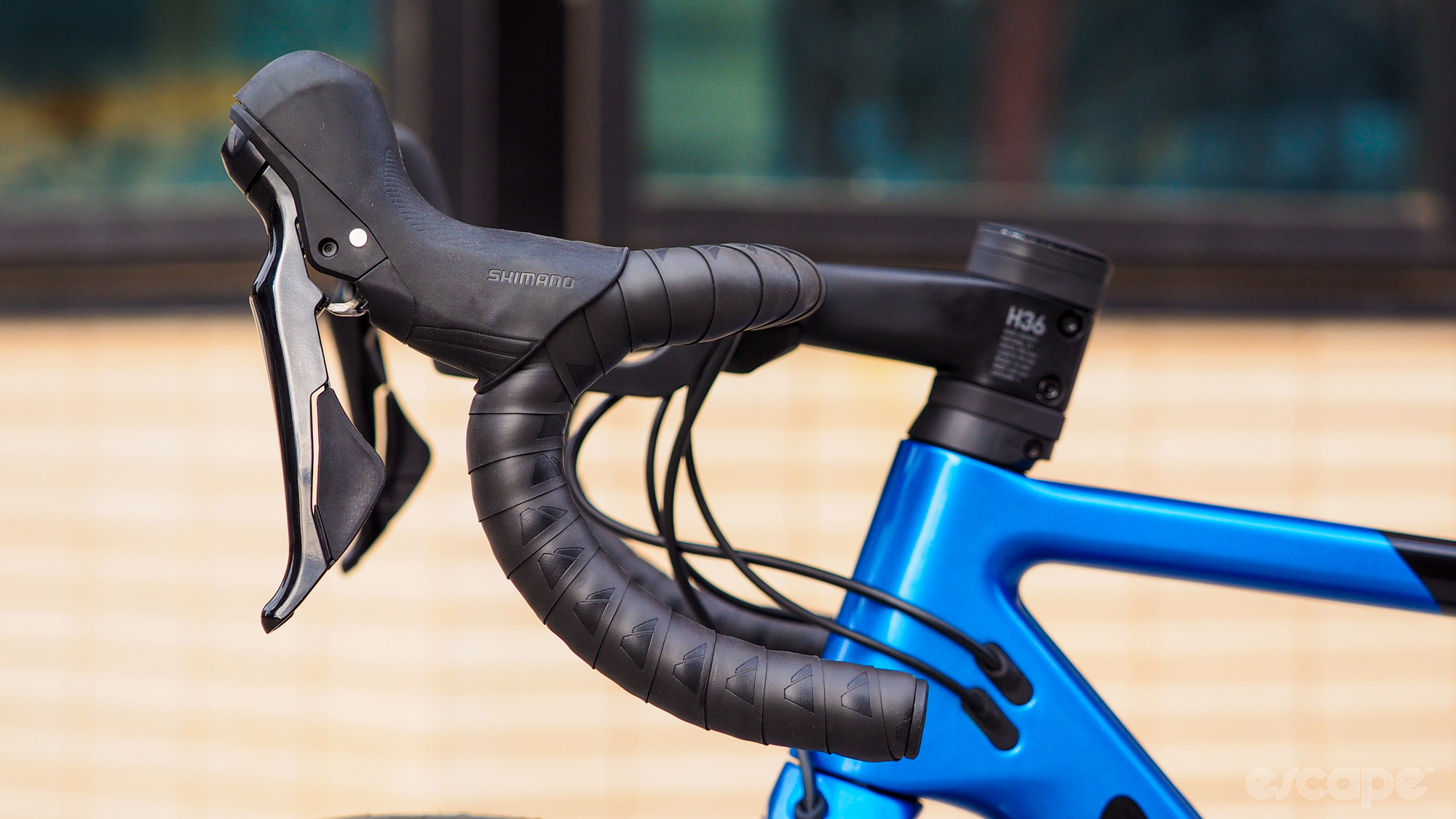

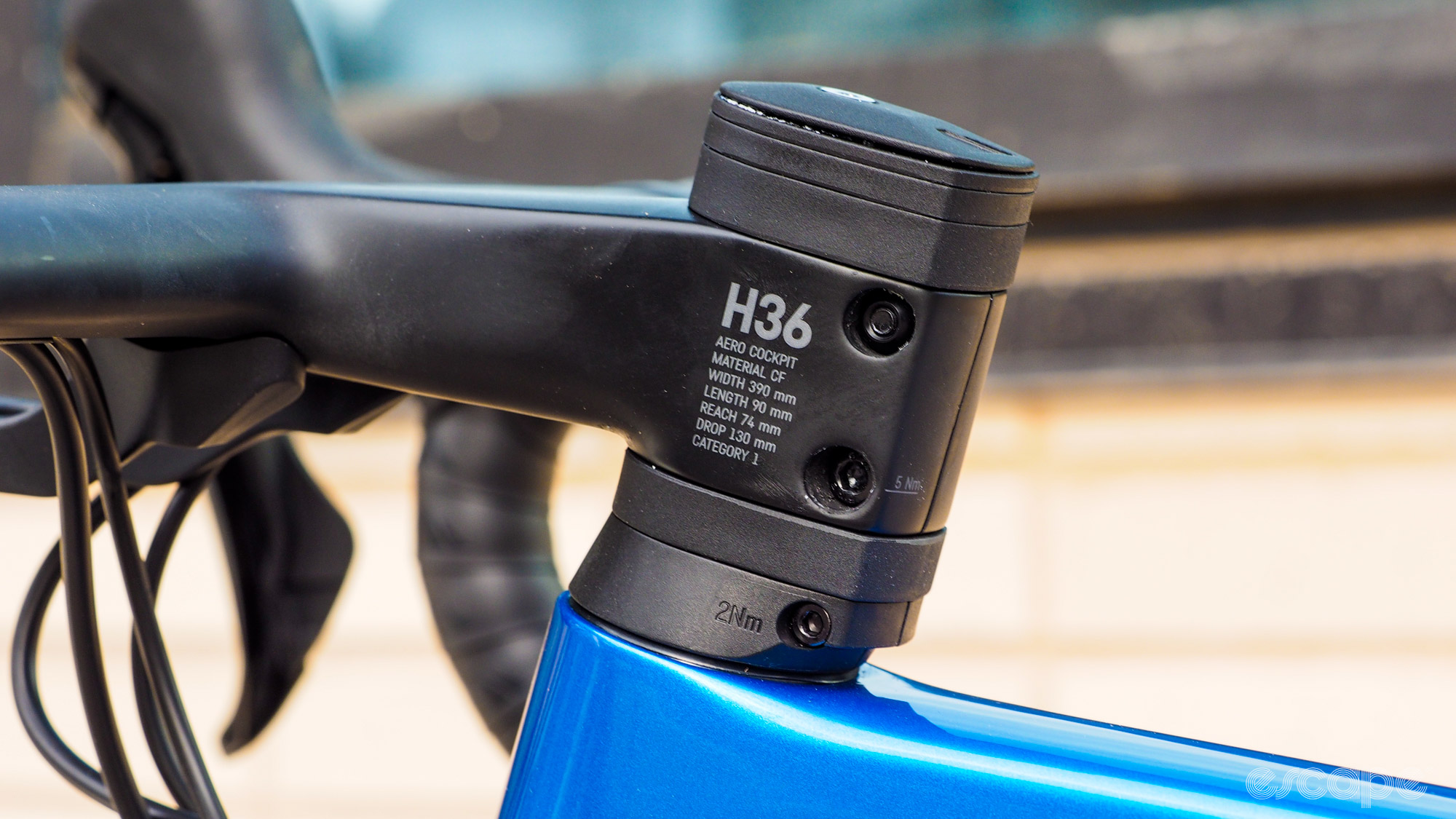
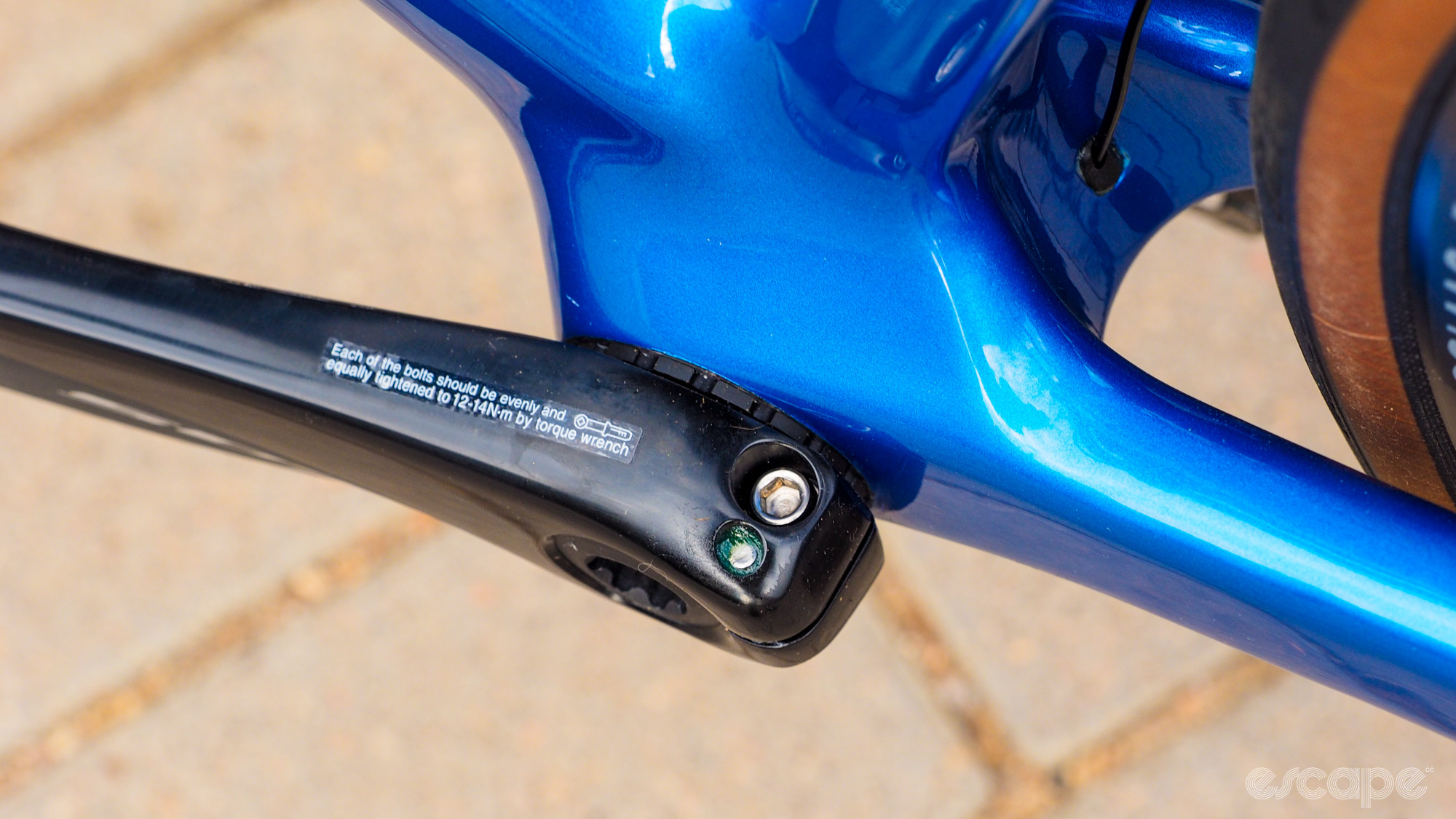
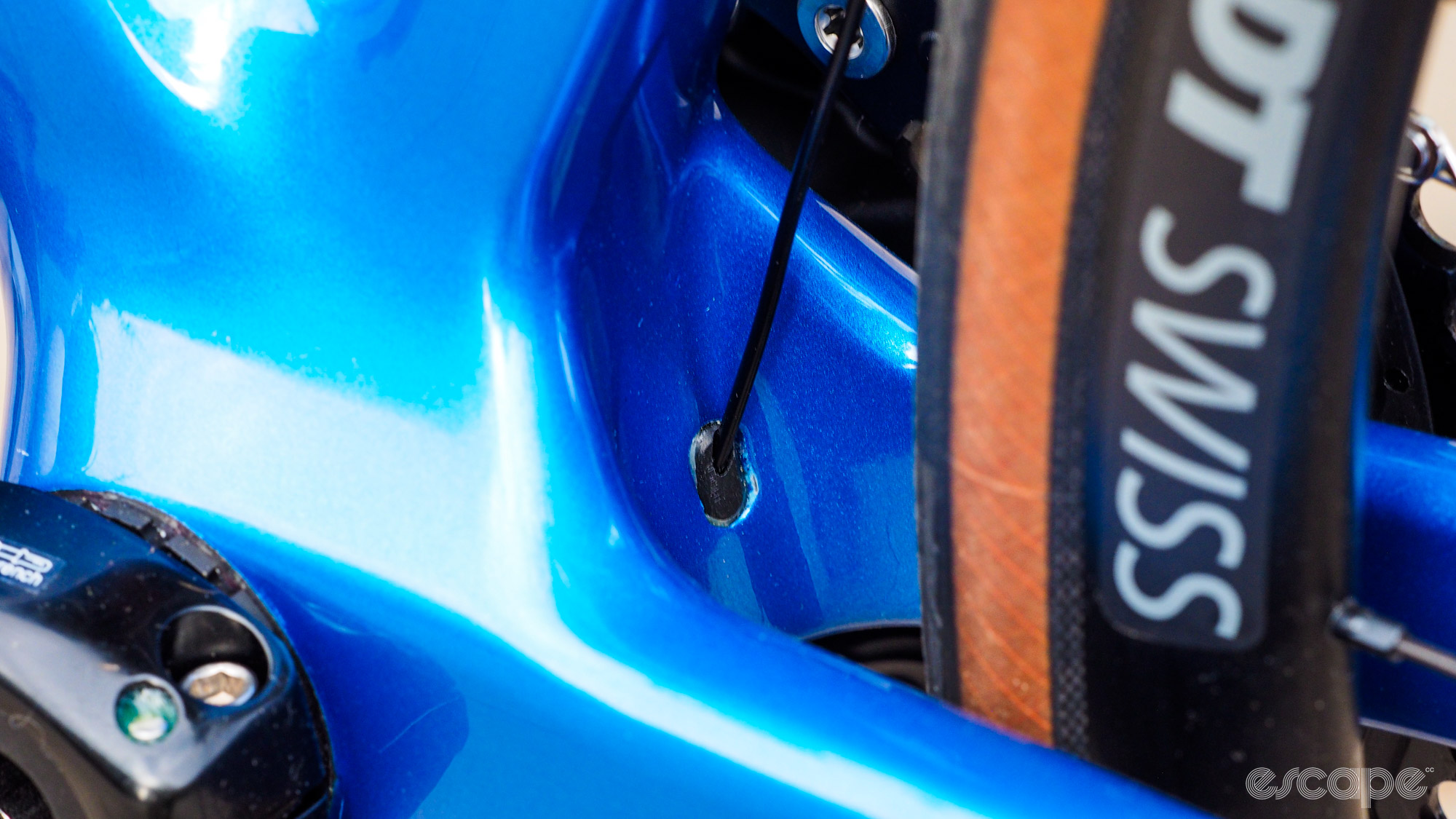
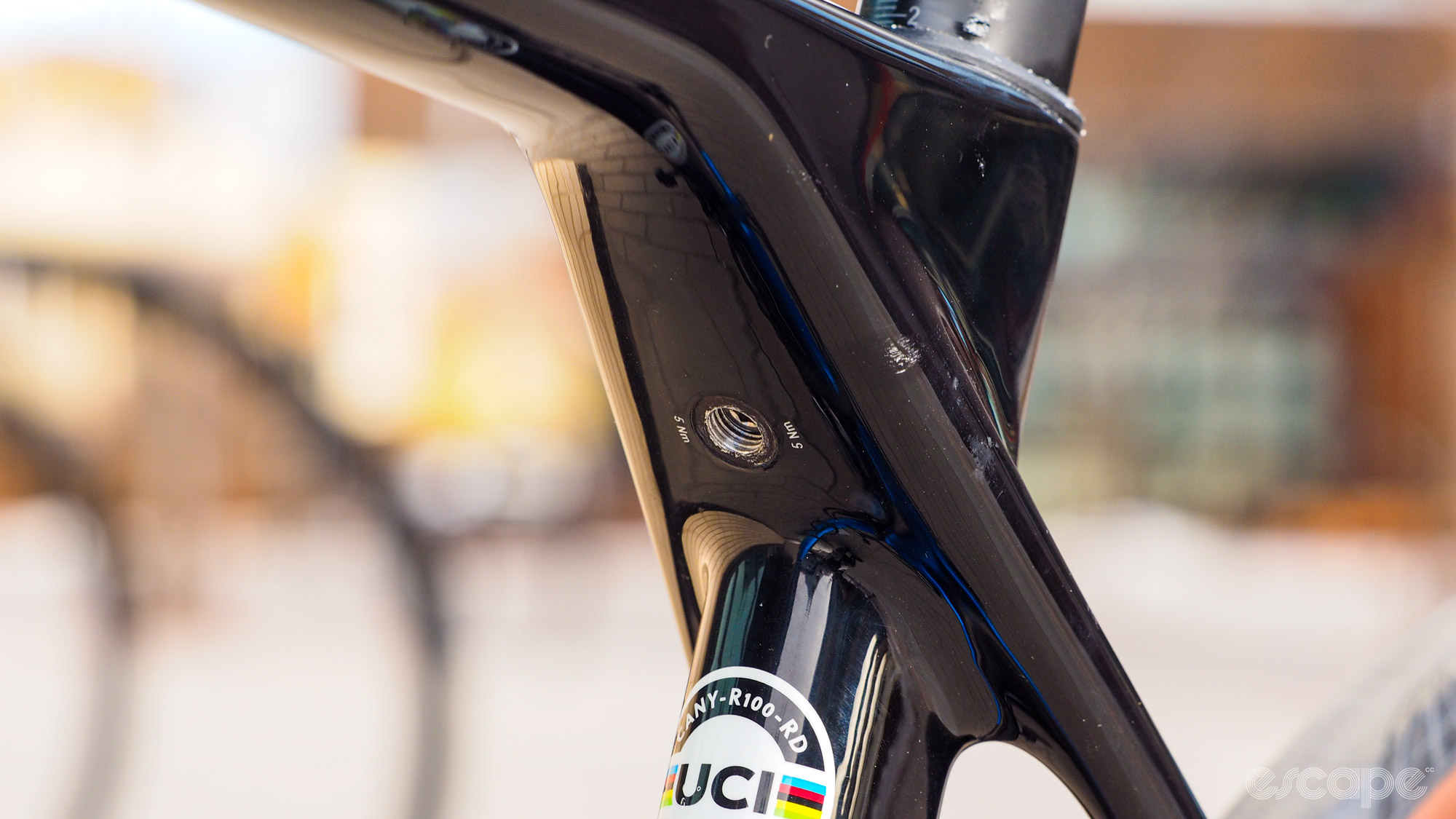
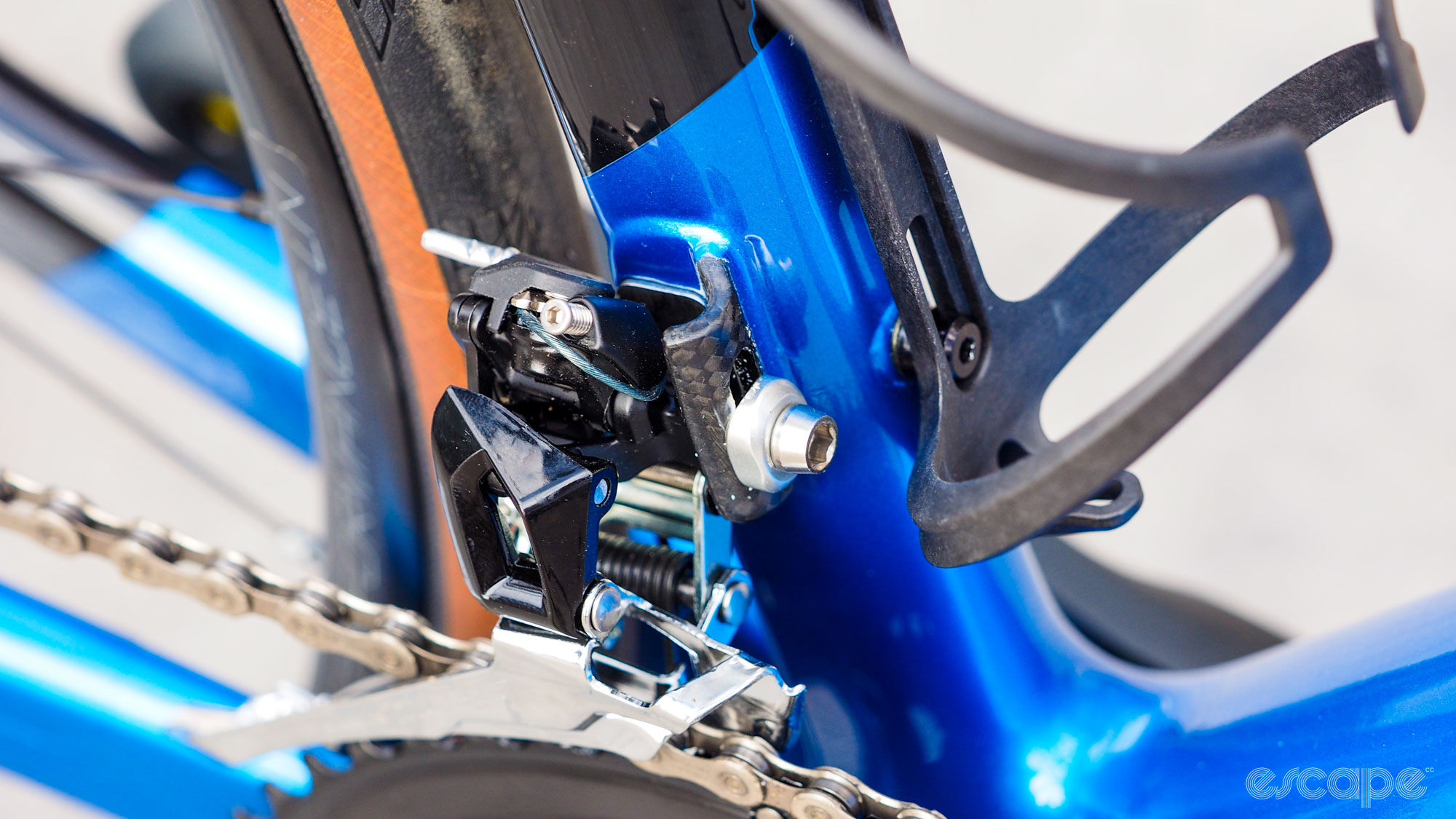
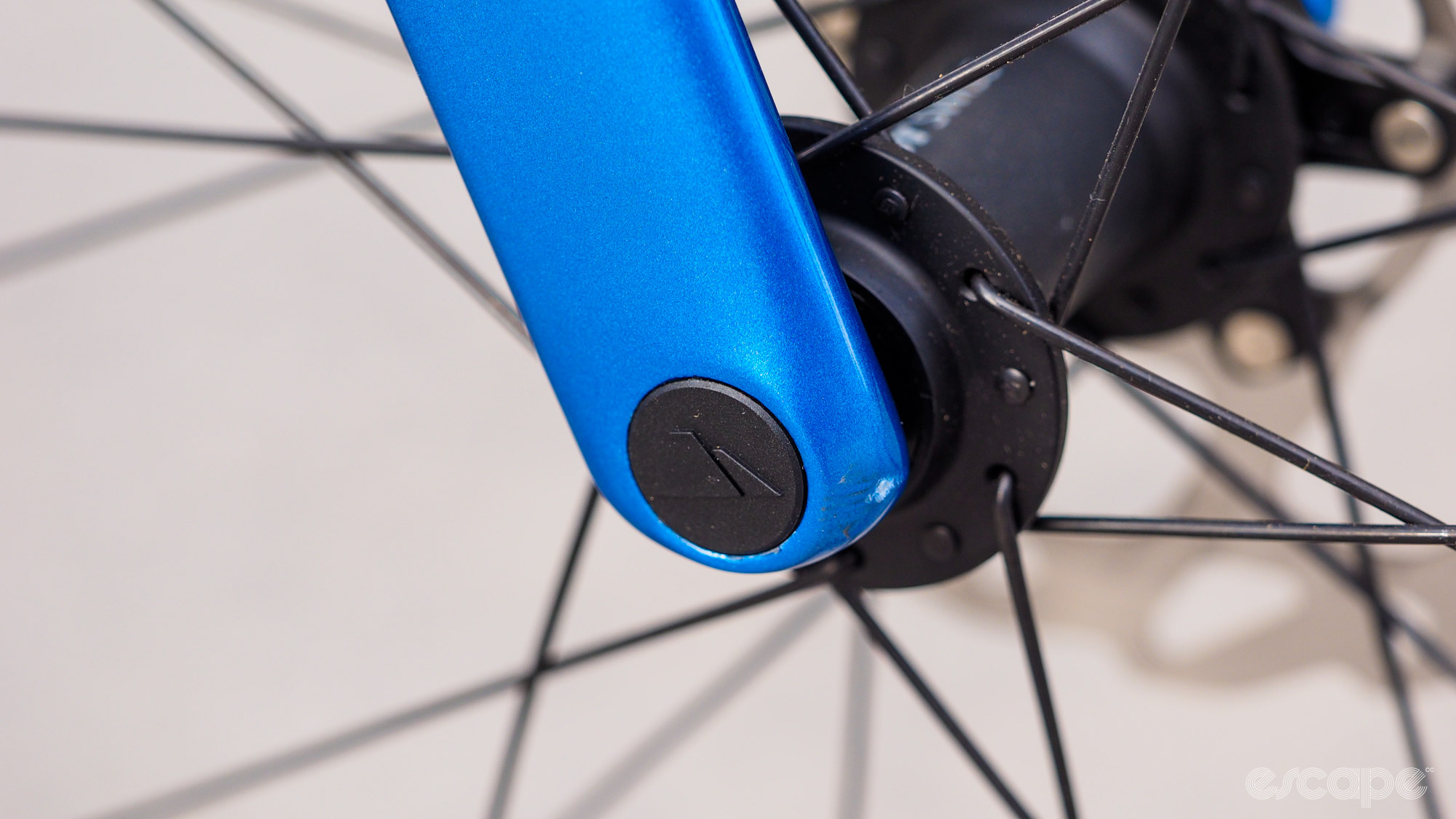
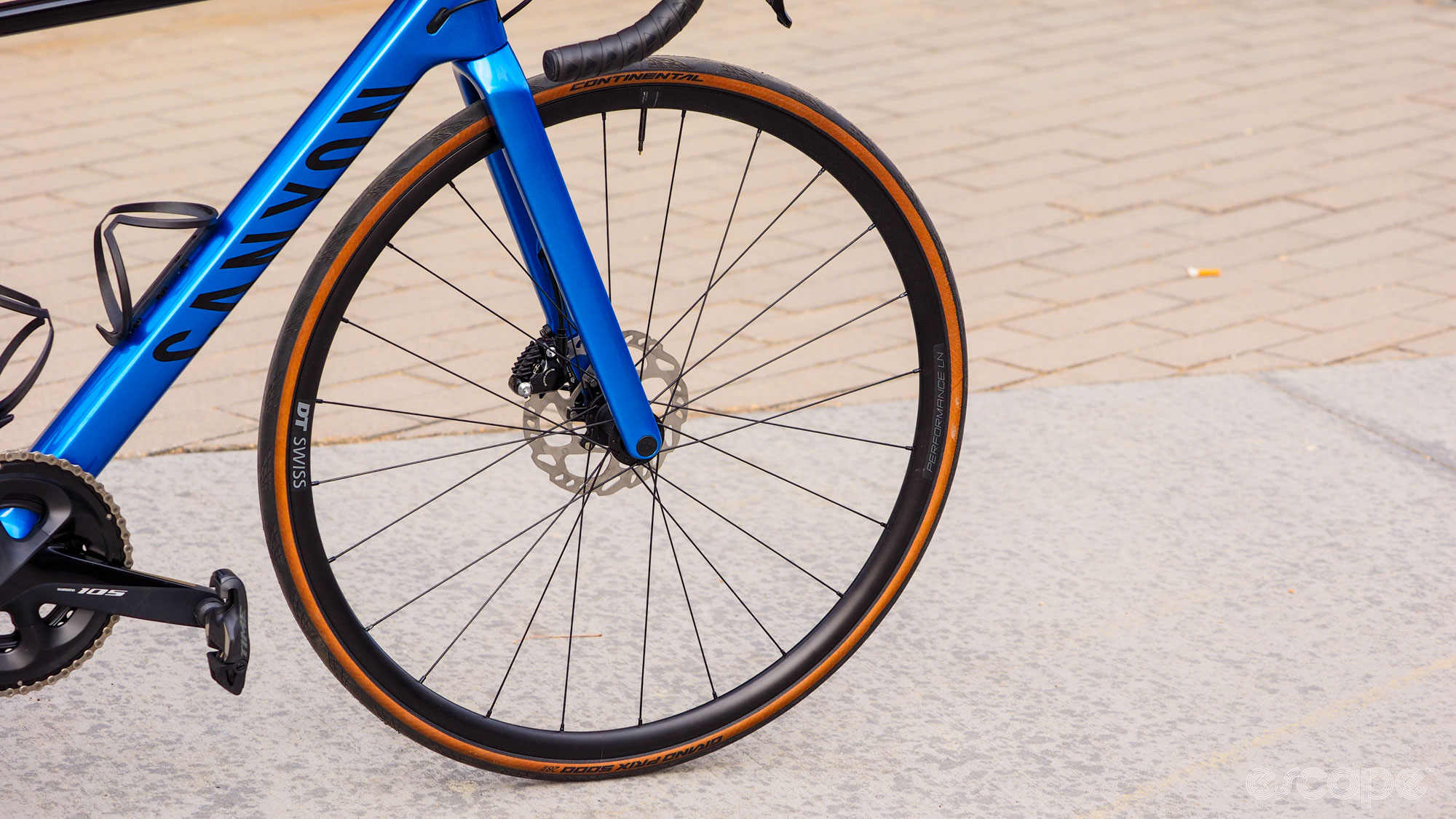
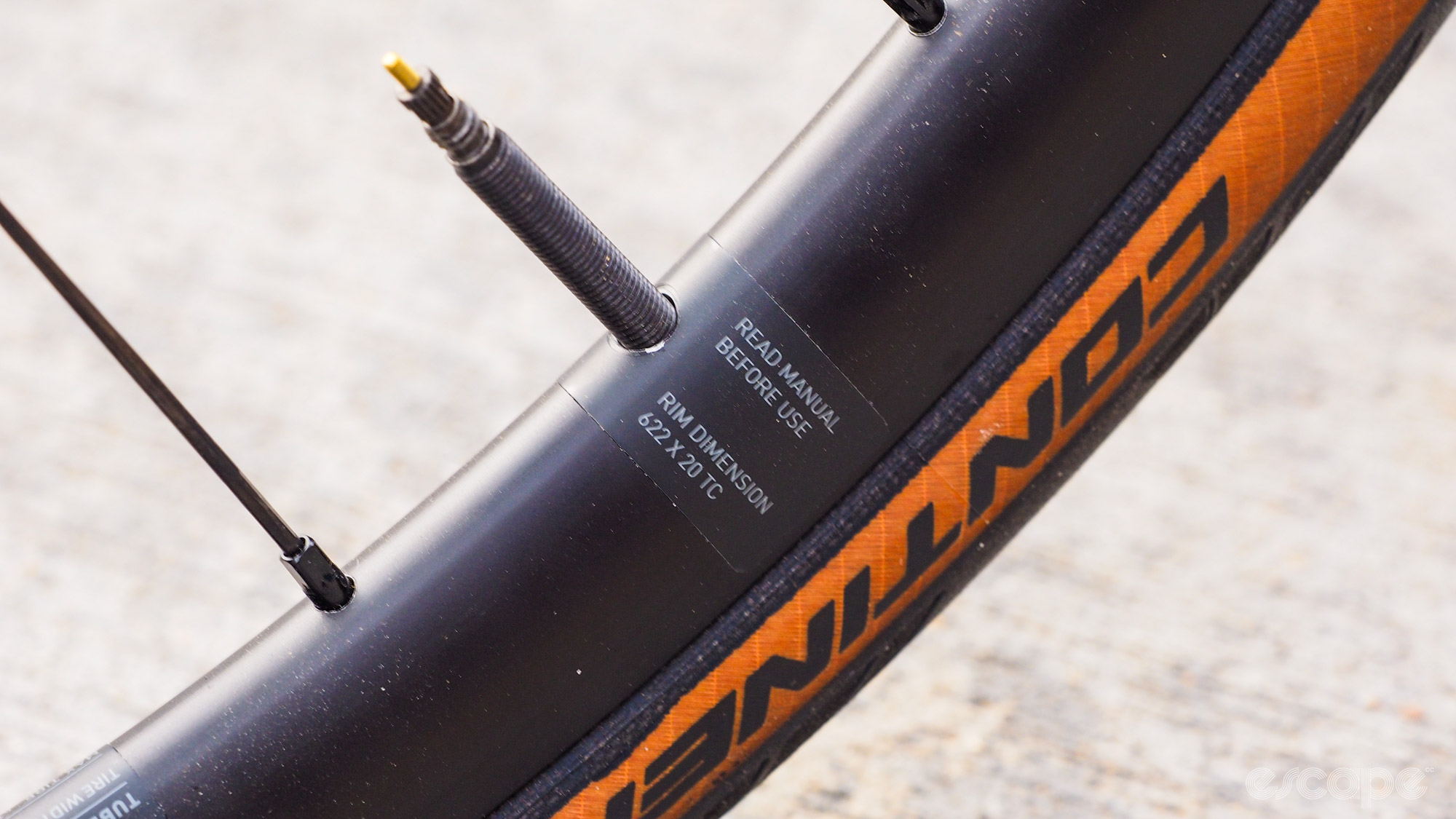
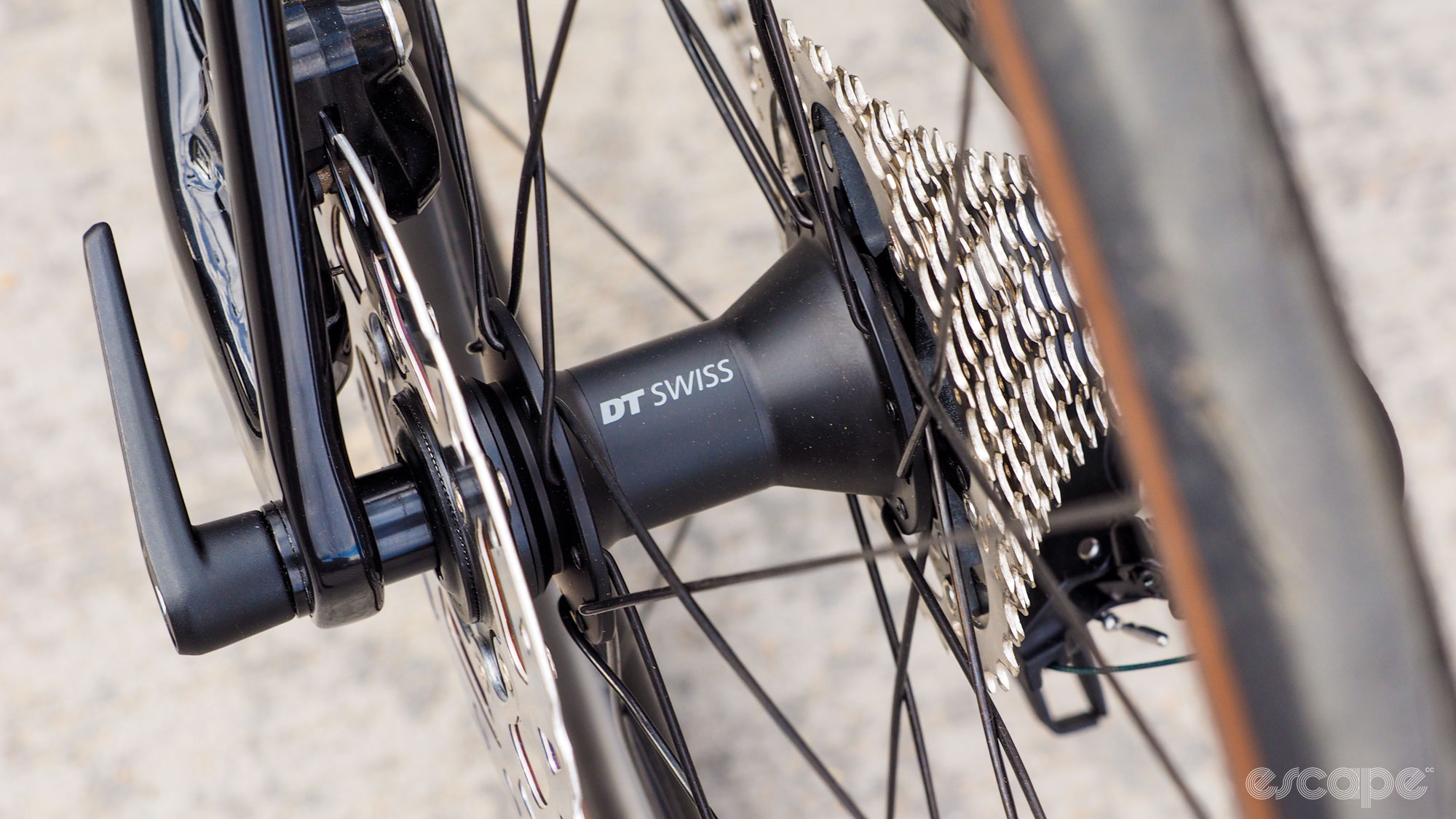
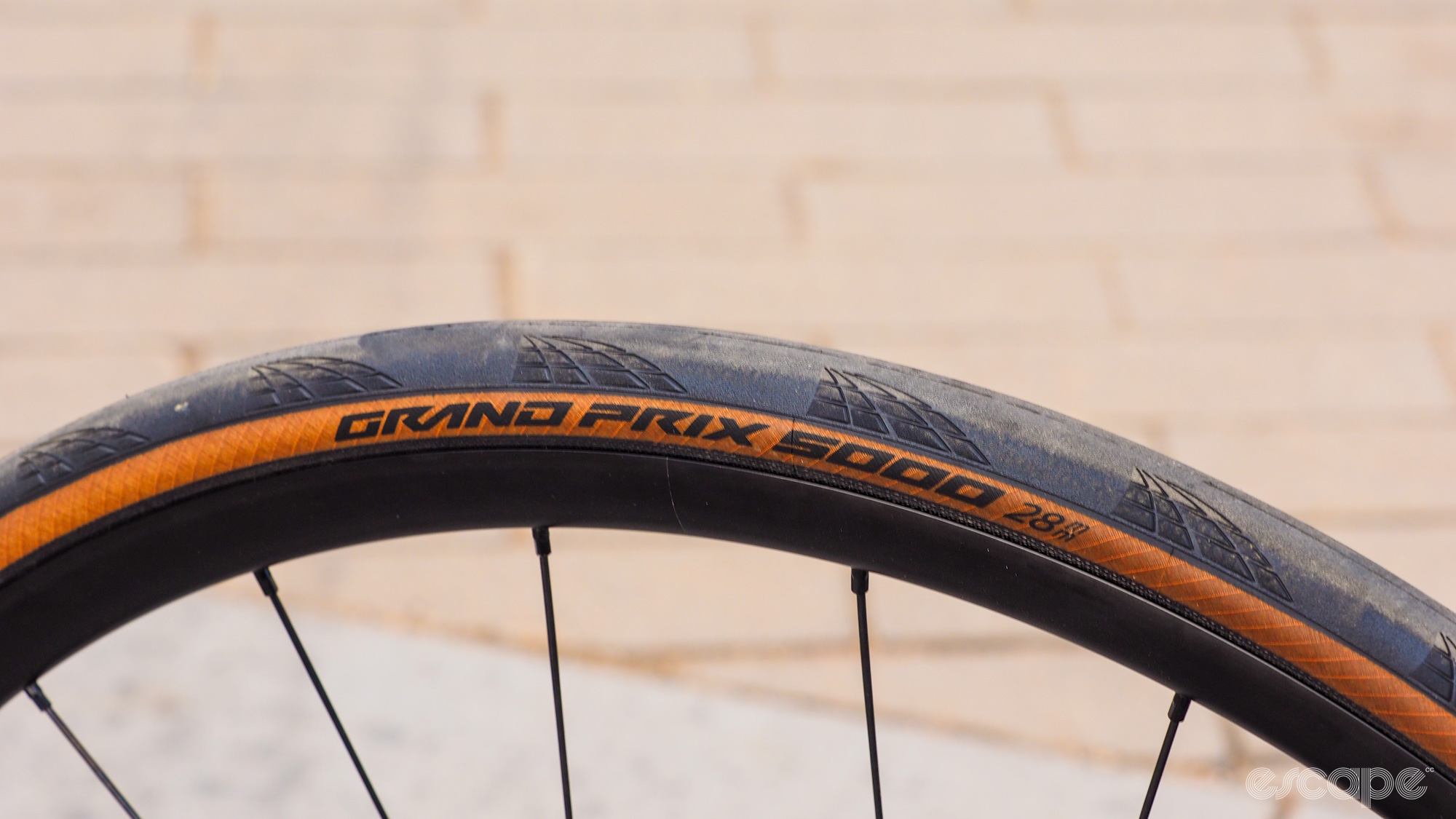
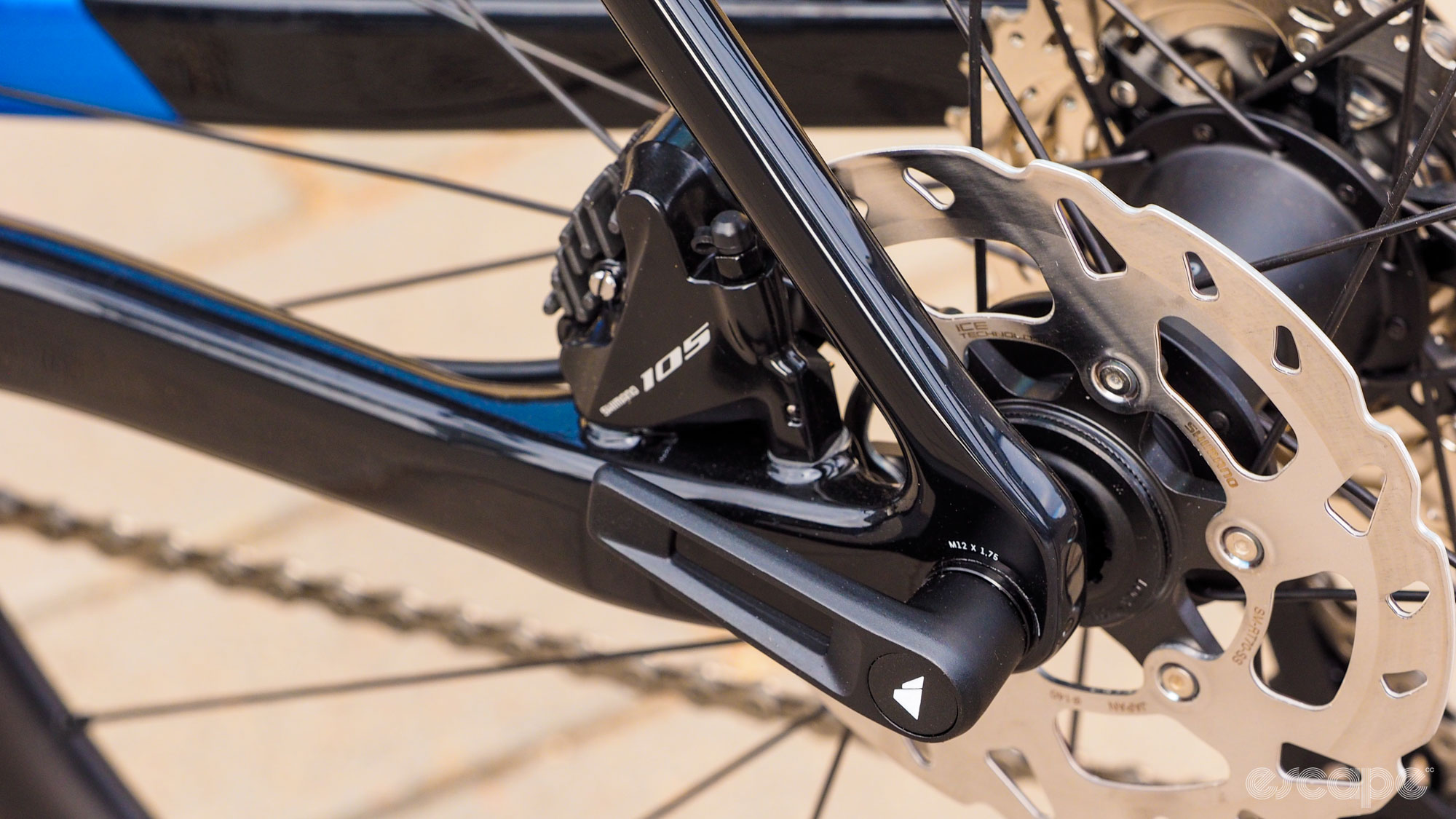
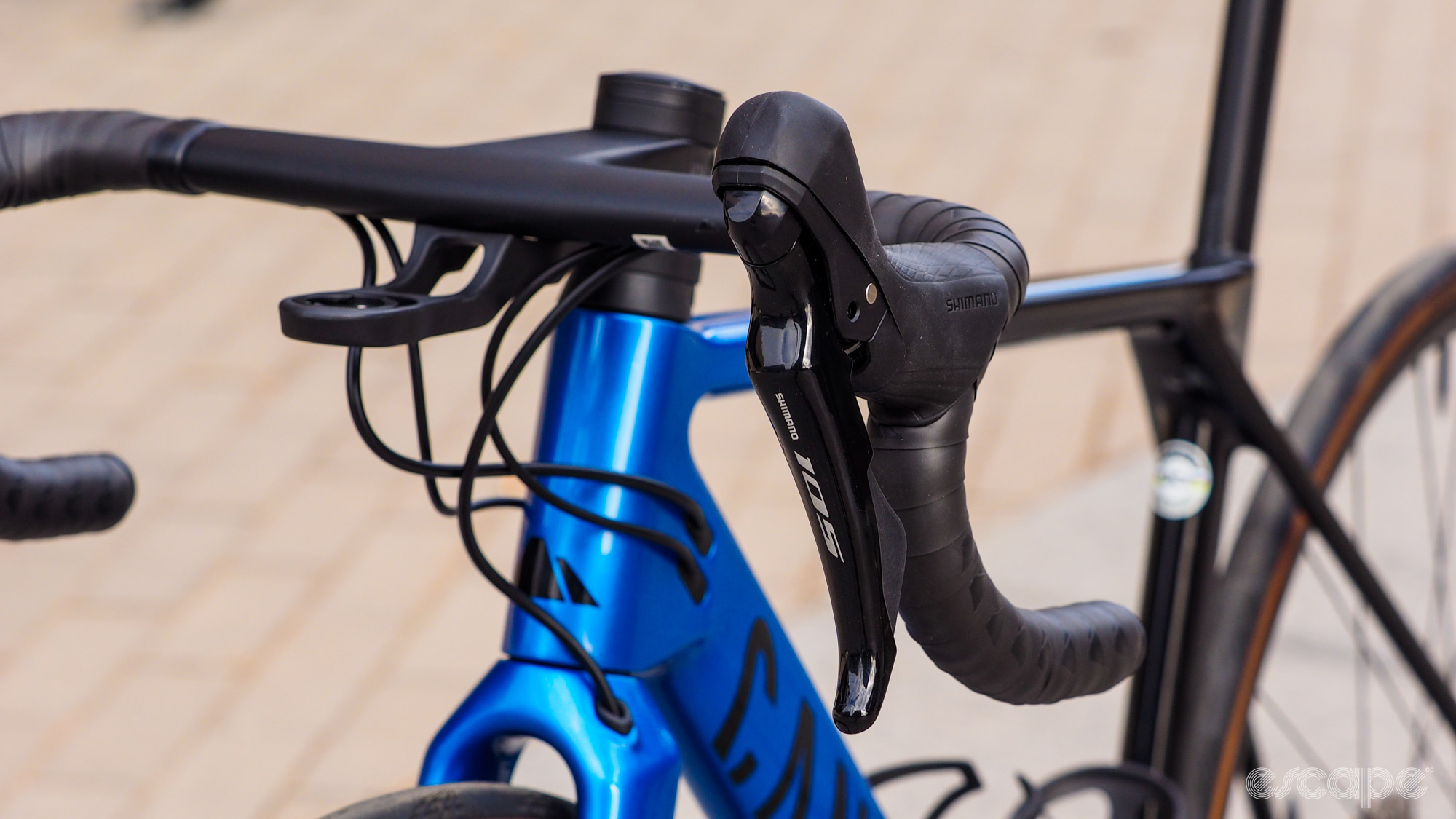
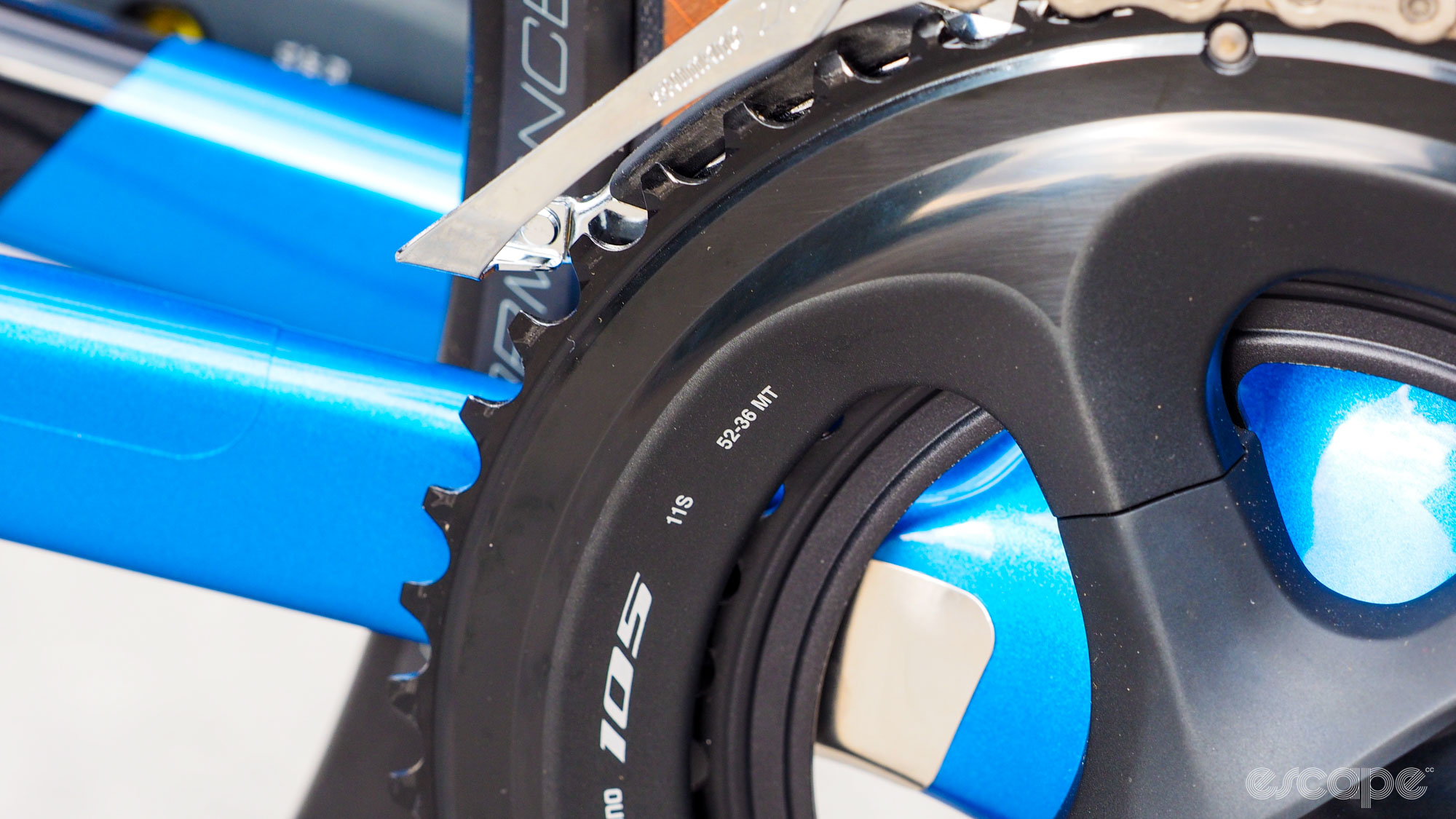
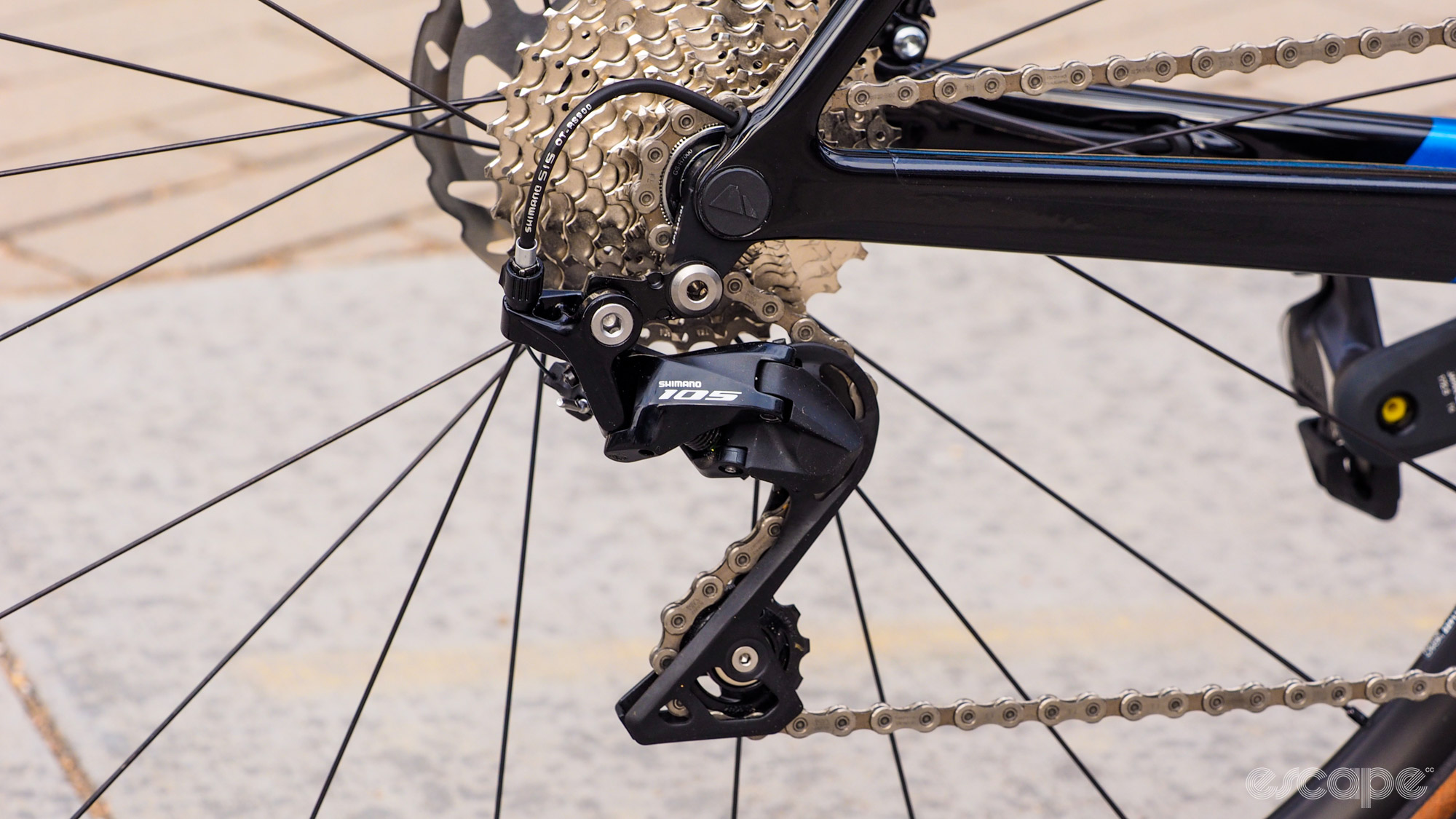
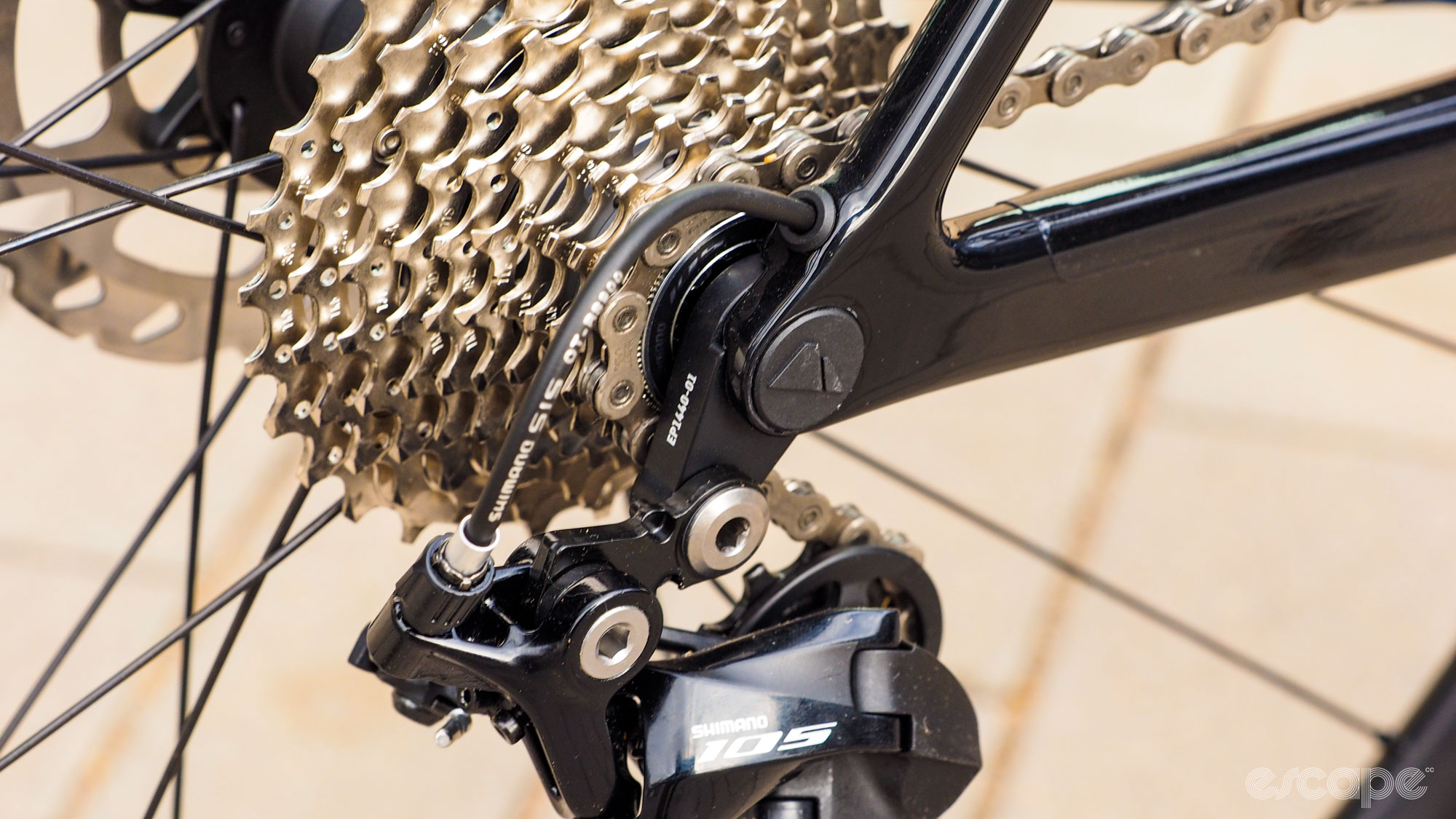
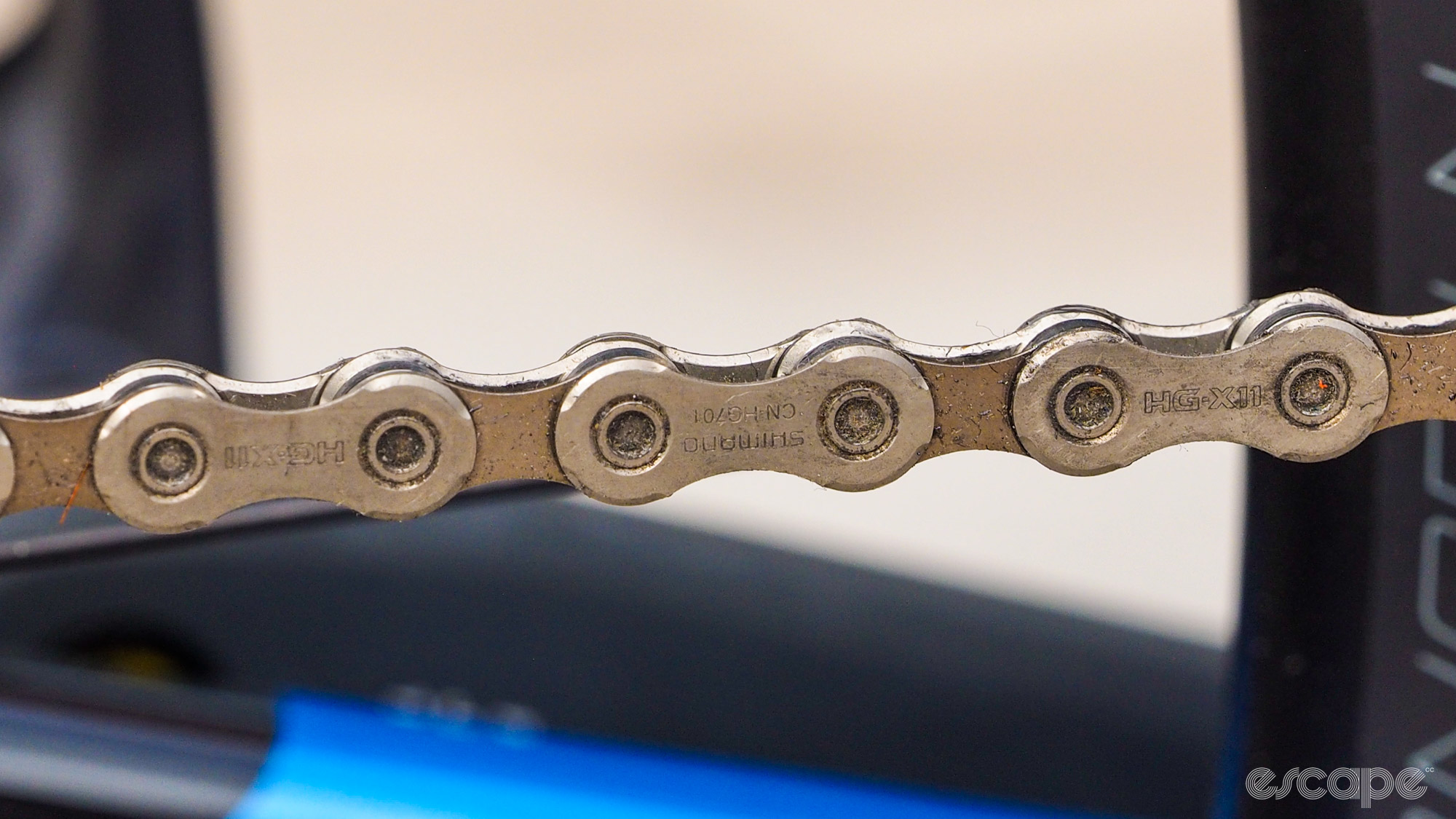
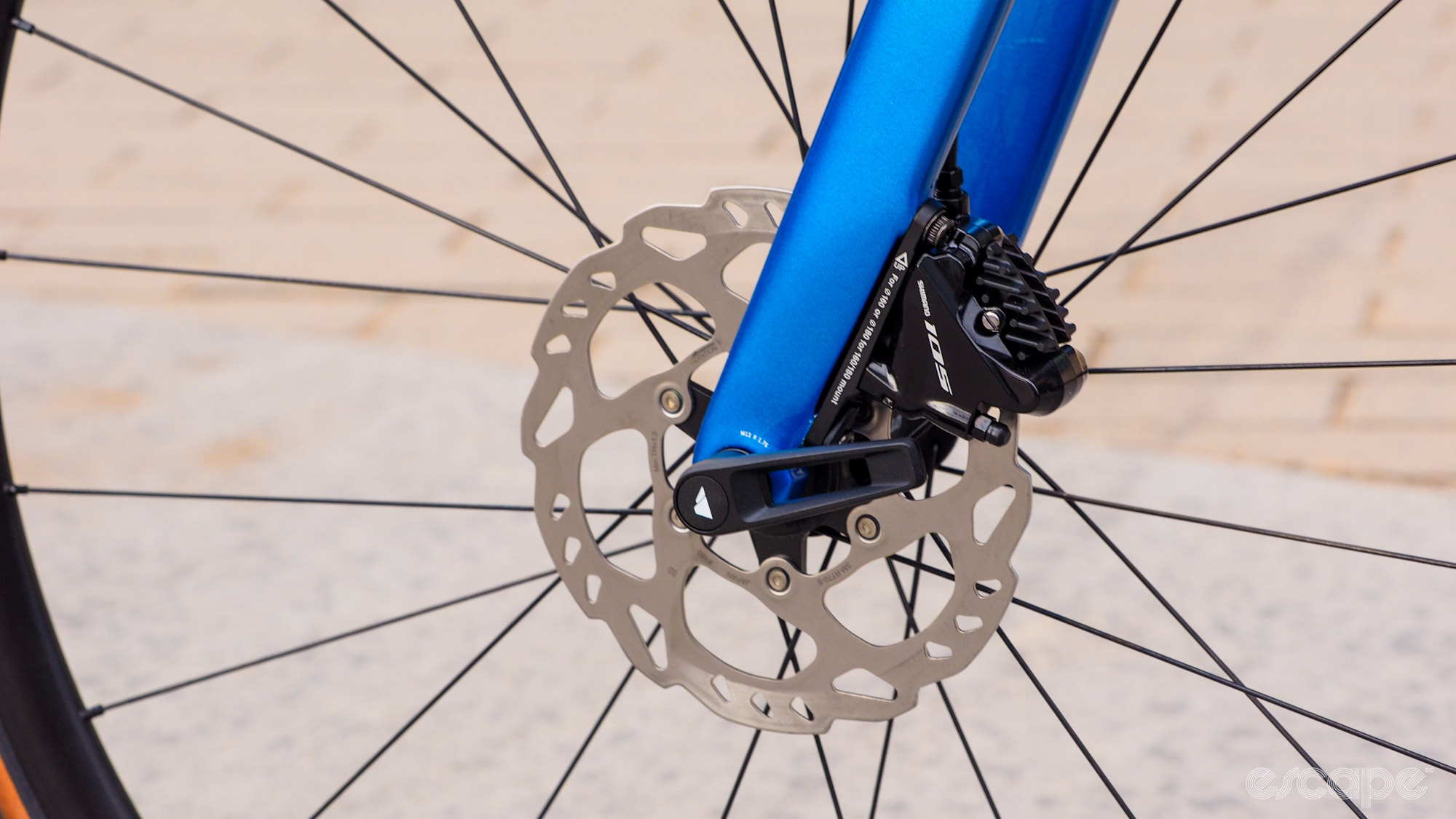
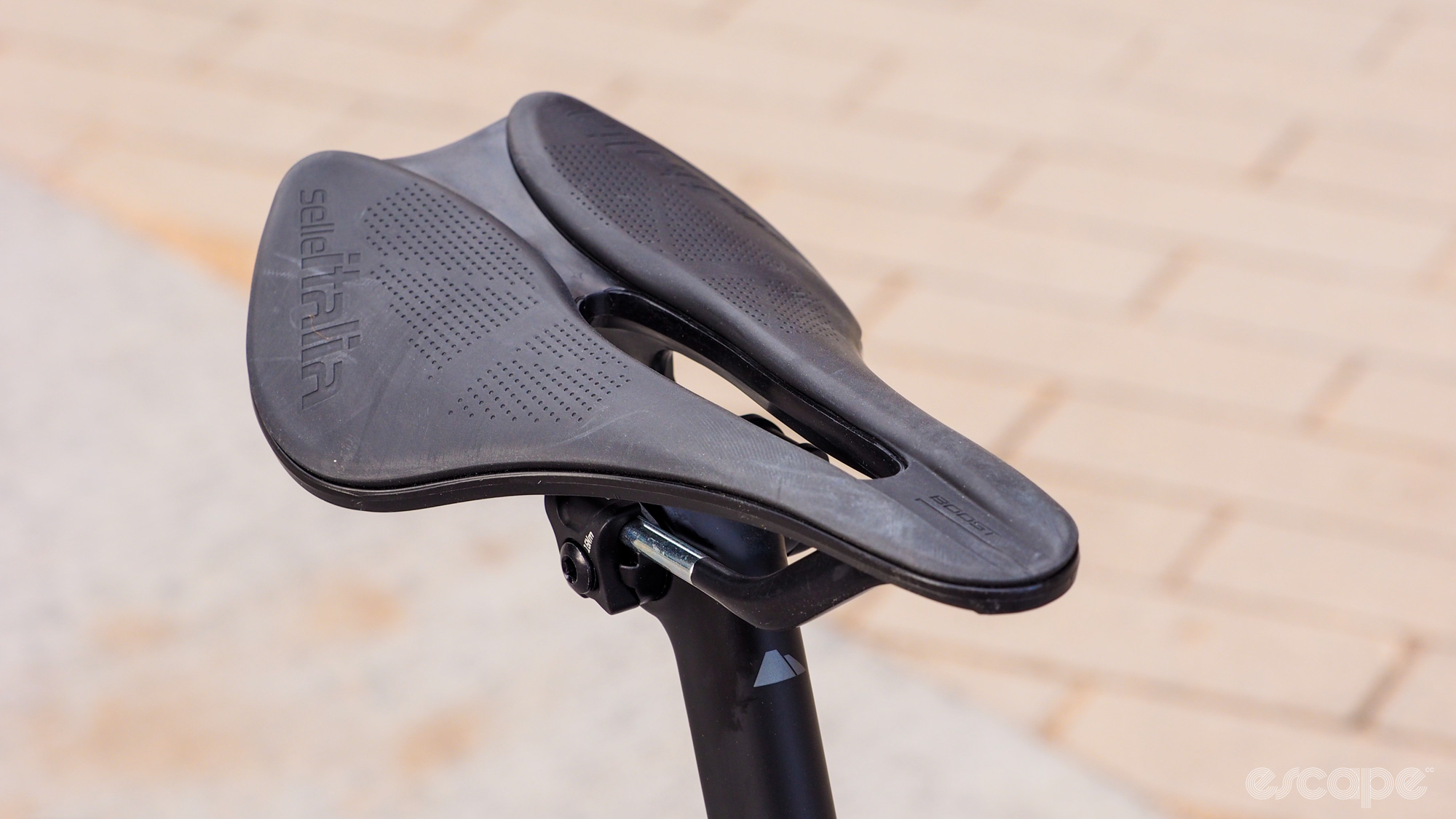

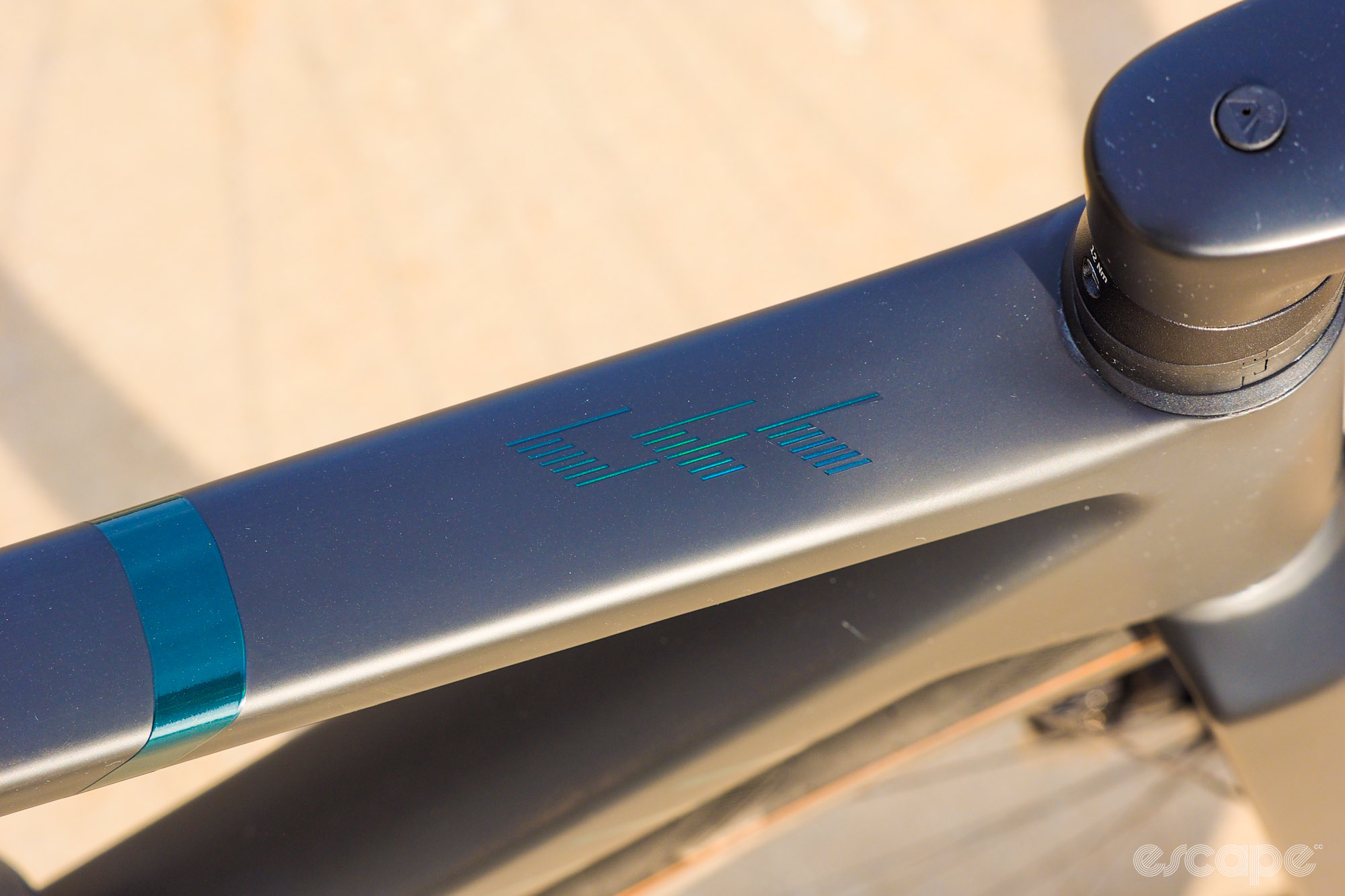
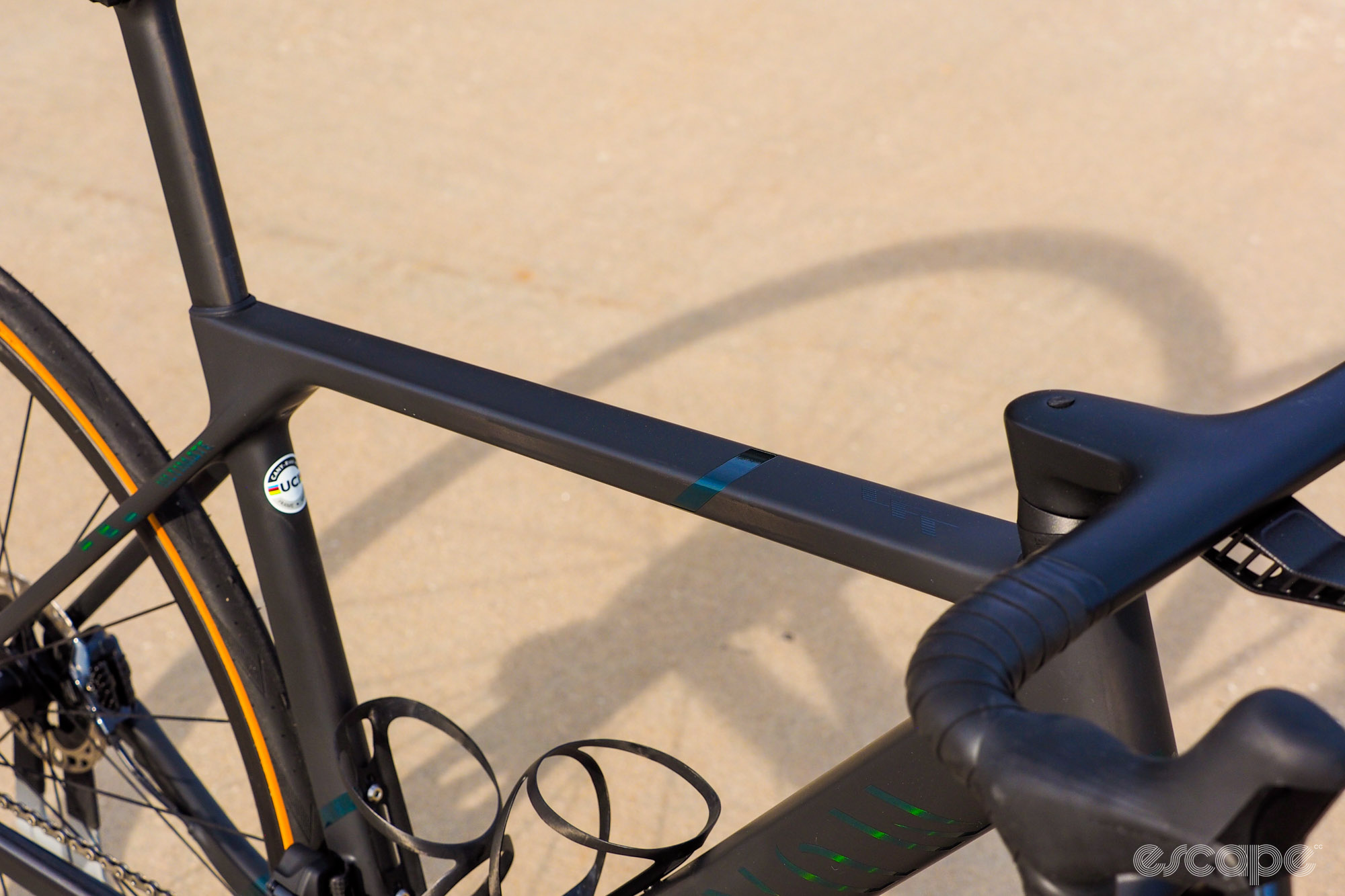
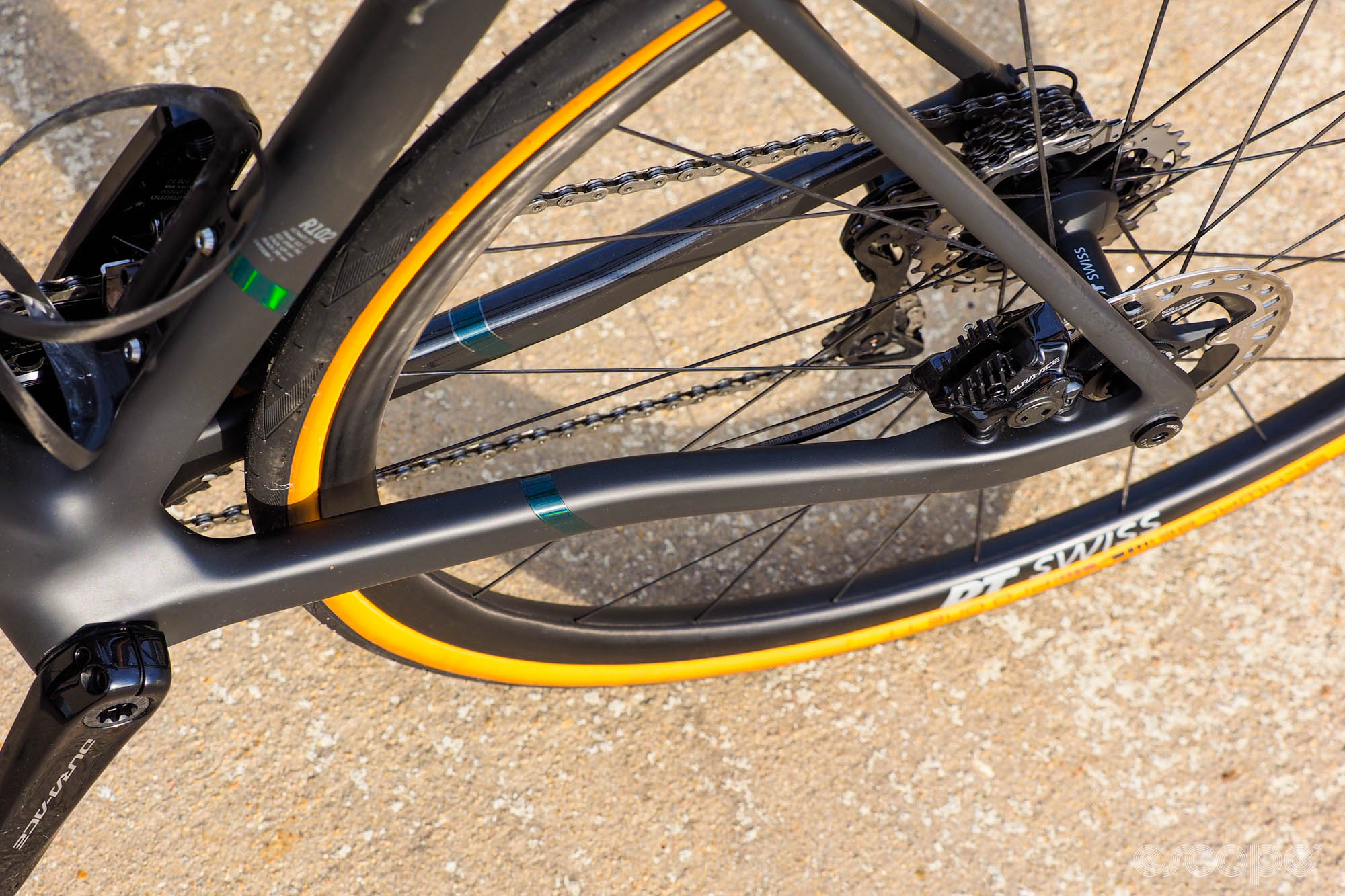

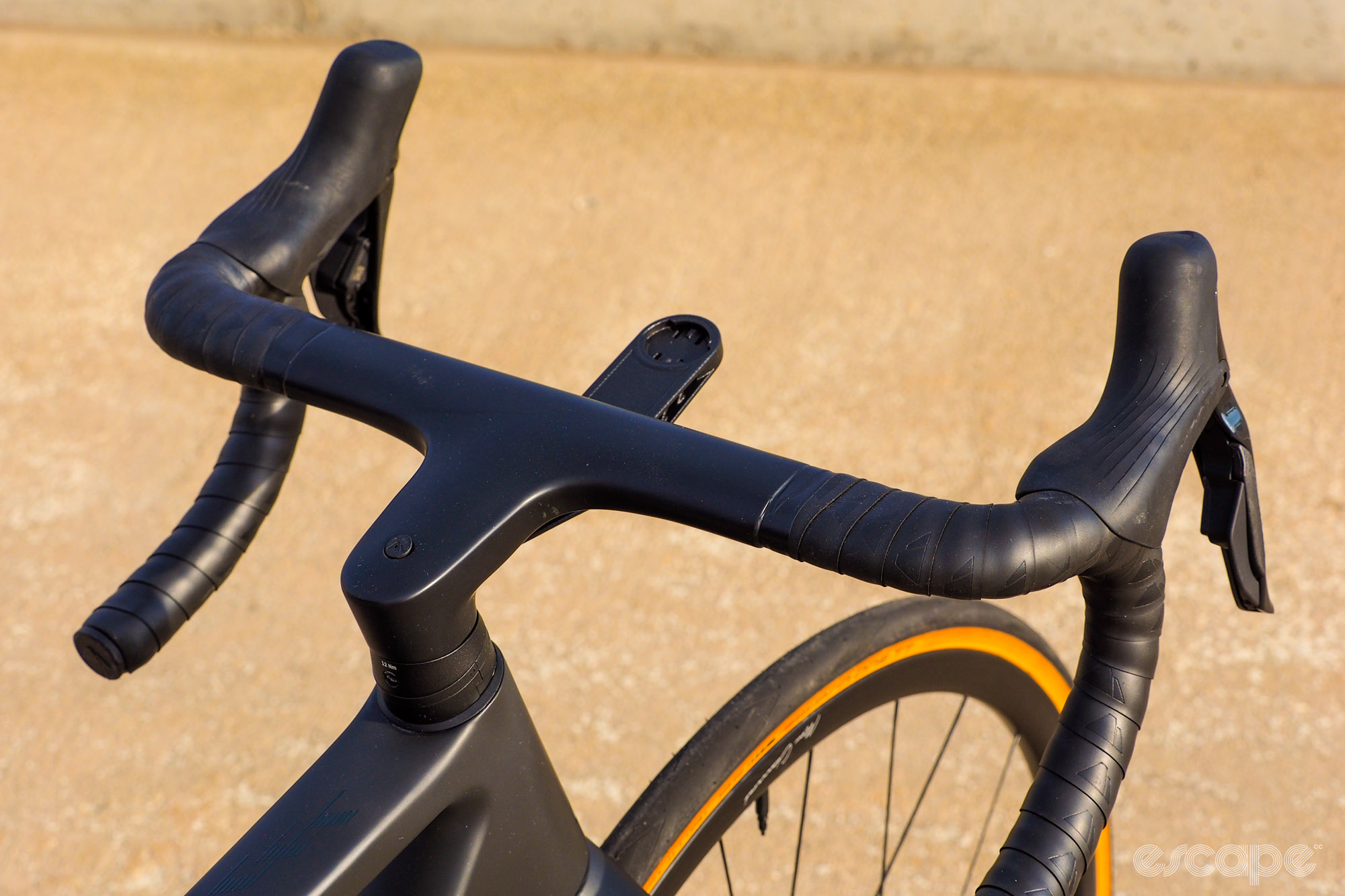
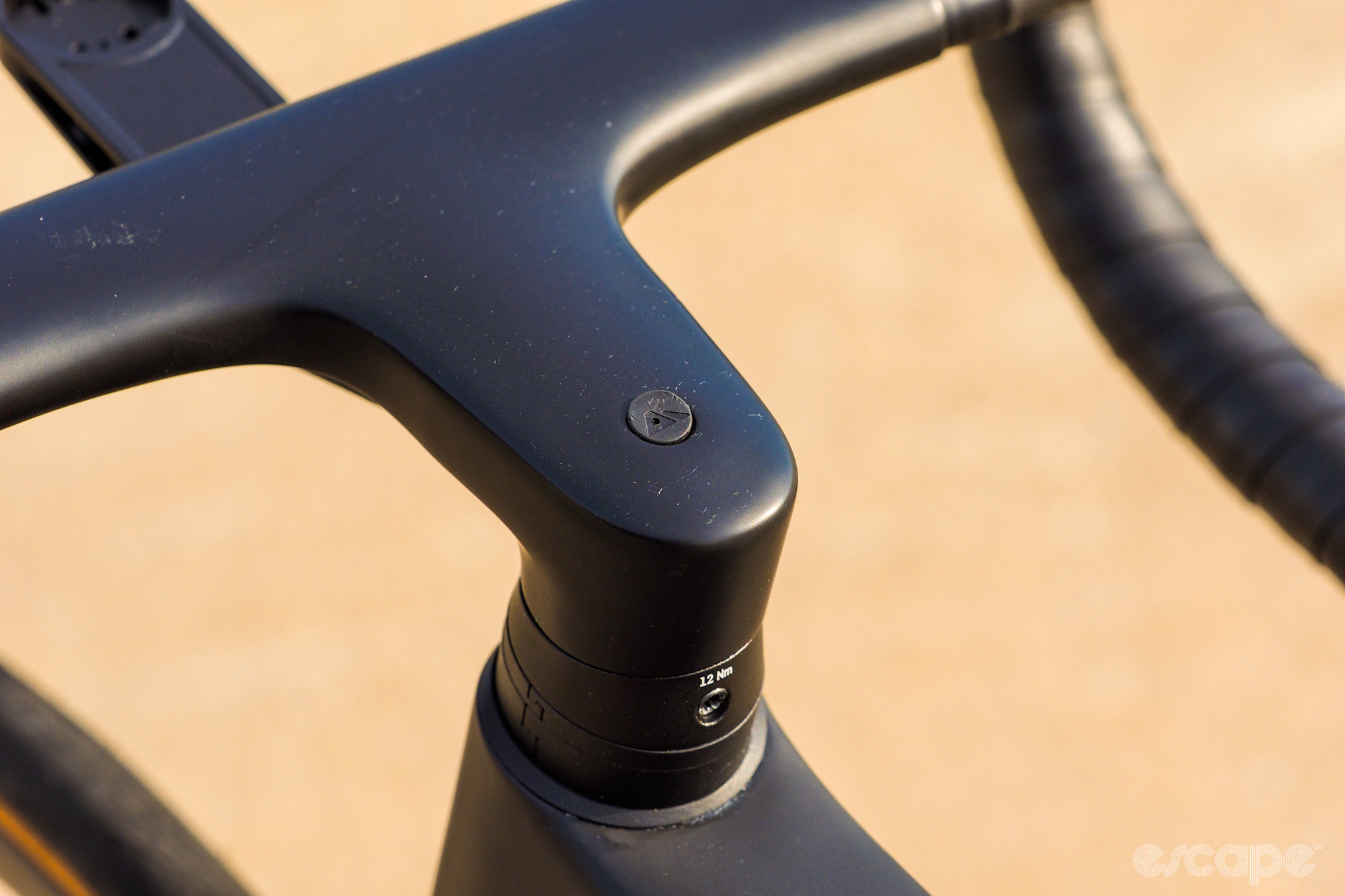


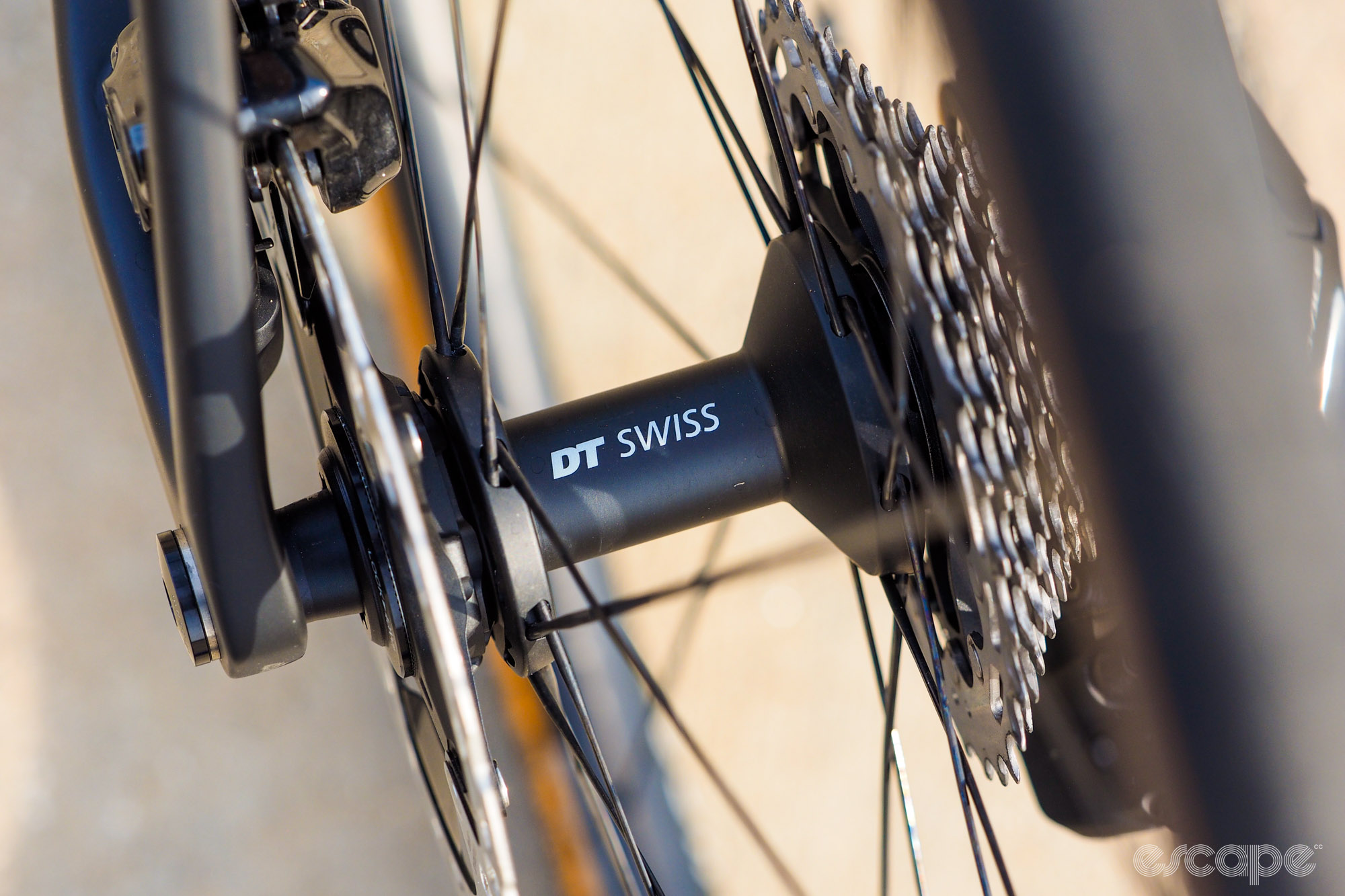

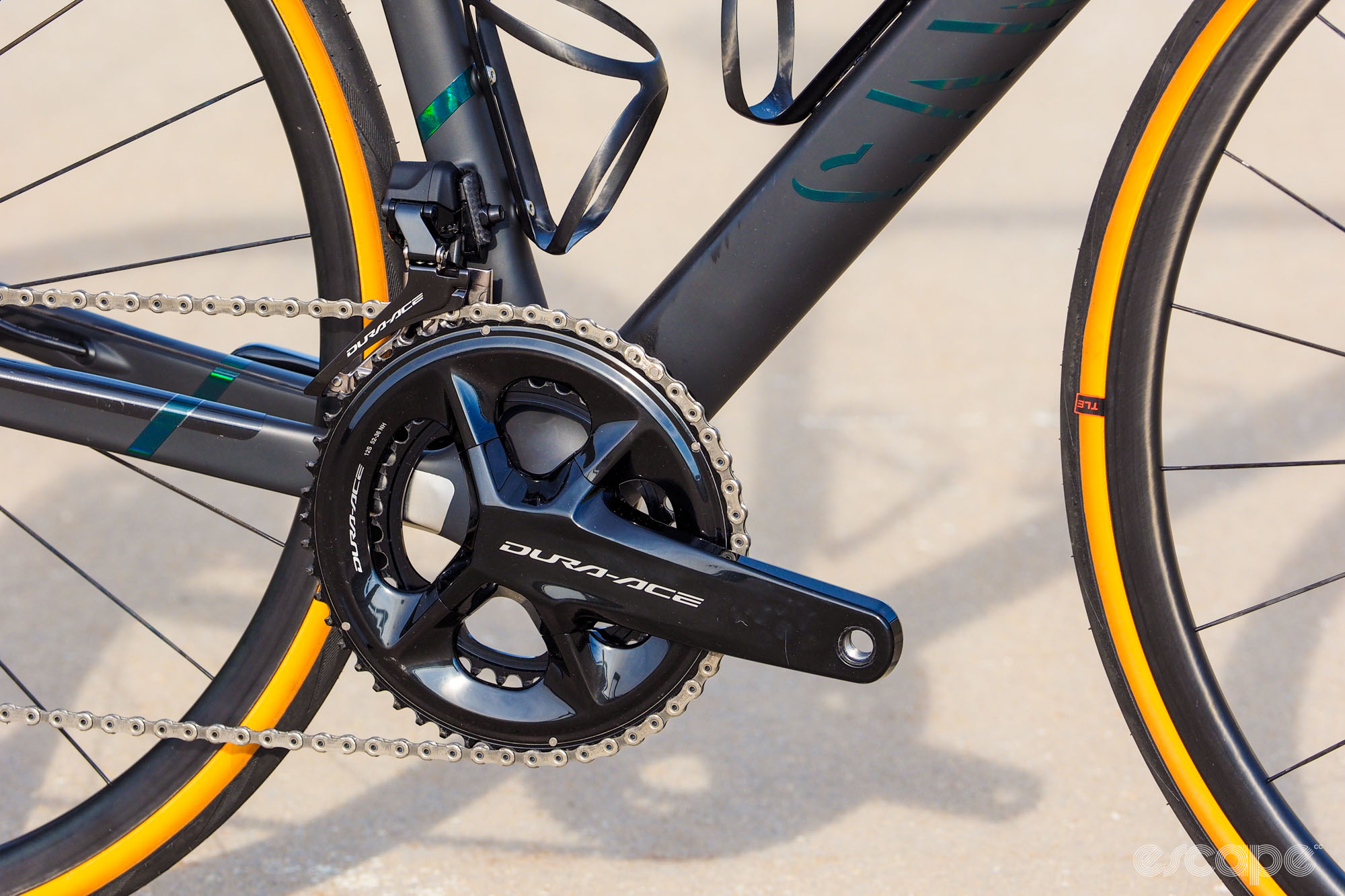
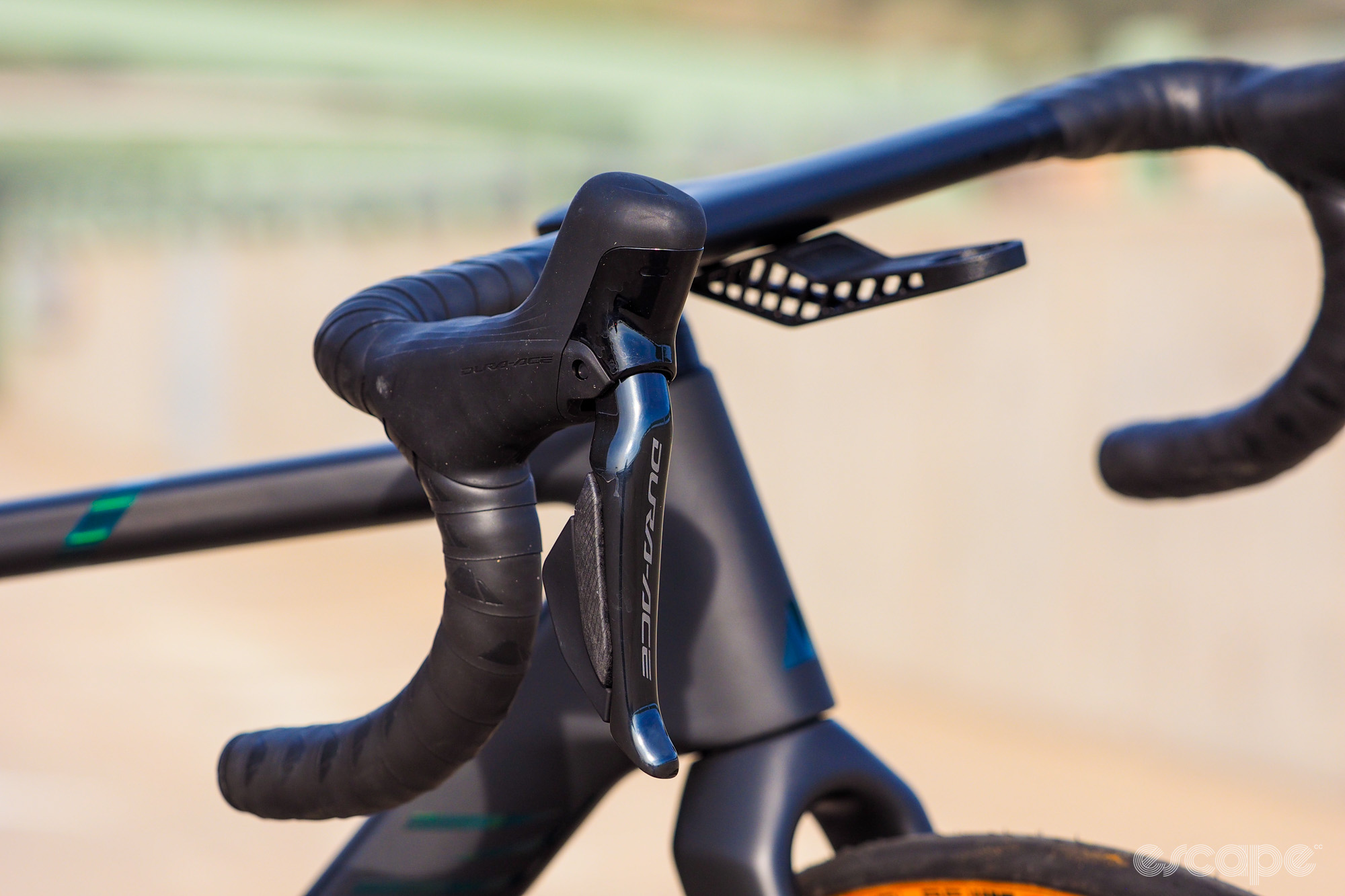
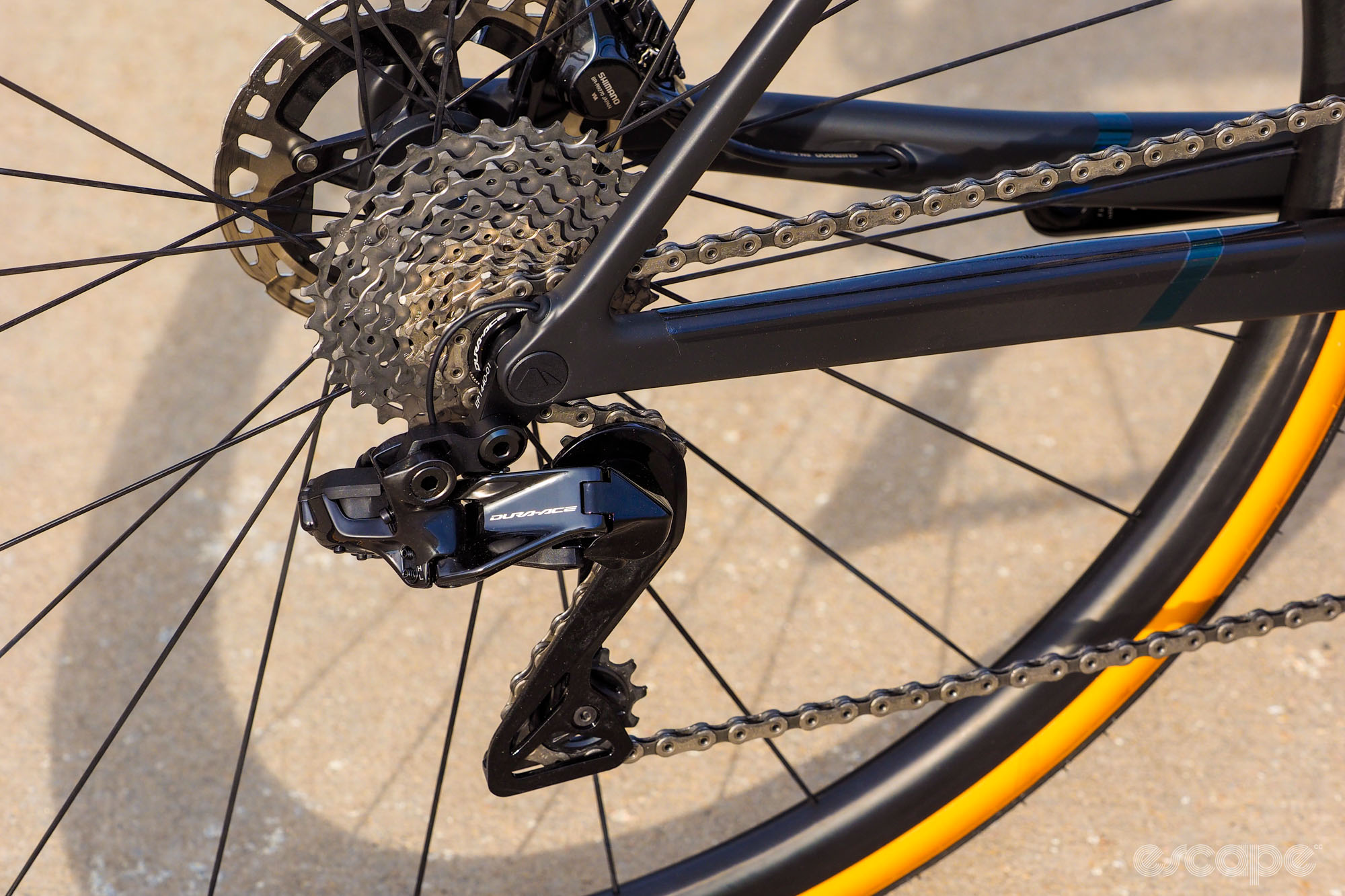
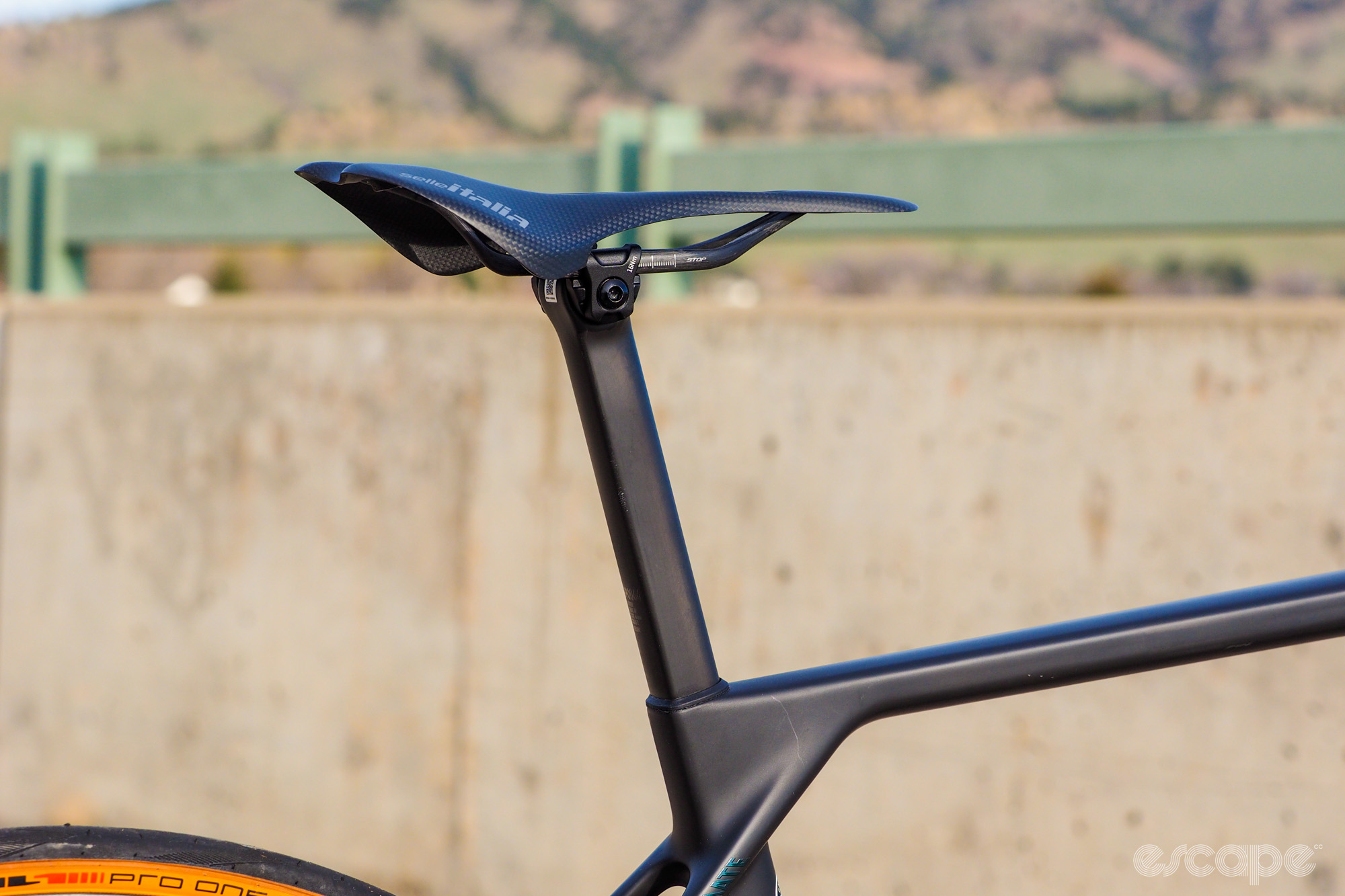

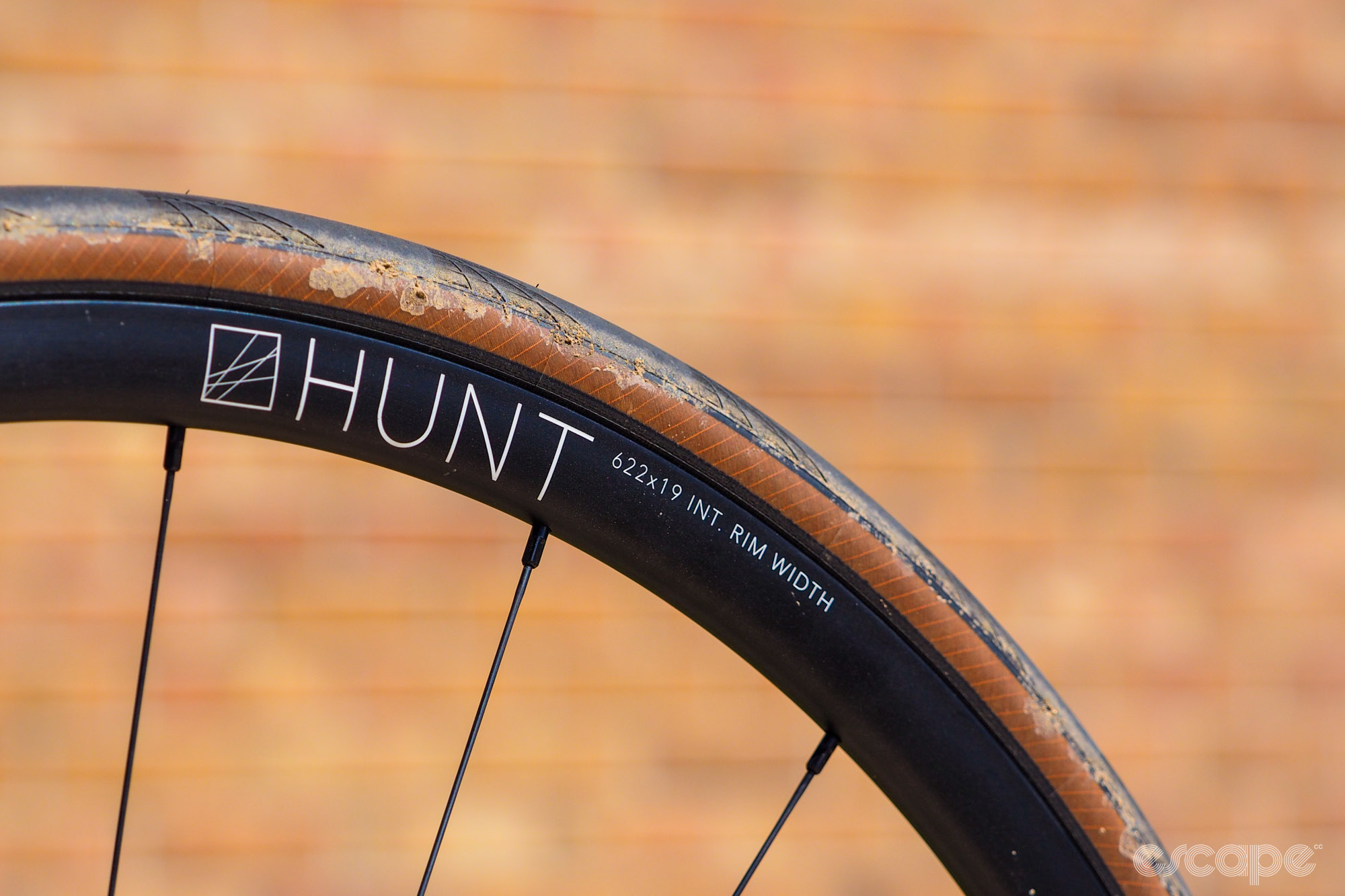
What did you think of this story?

